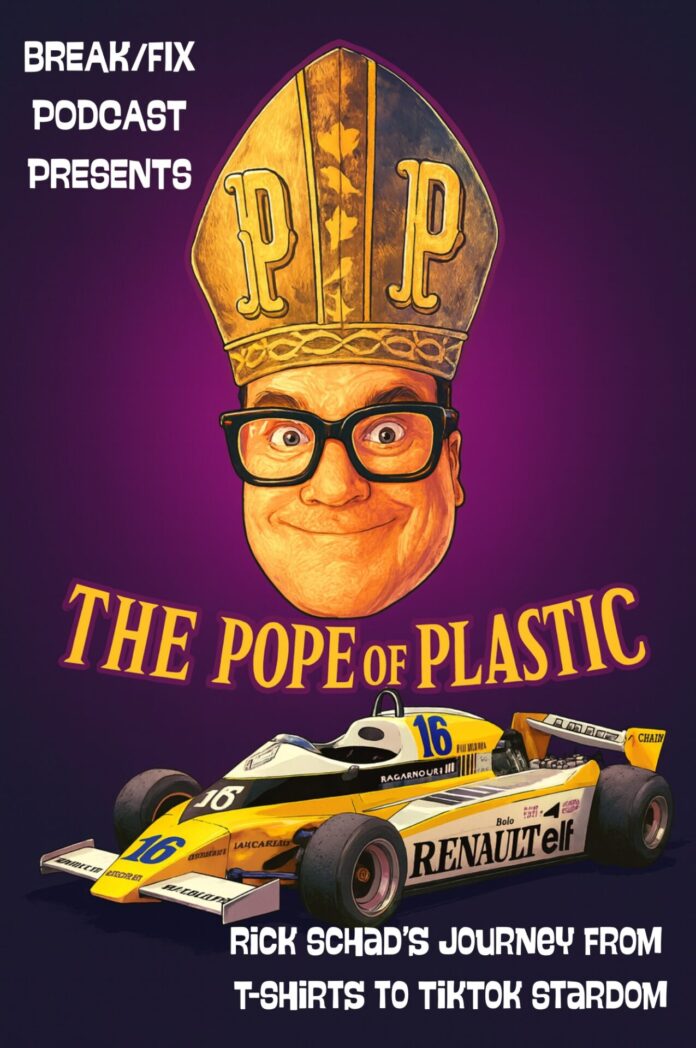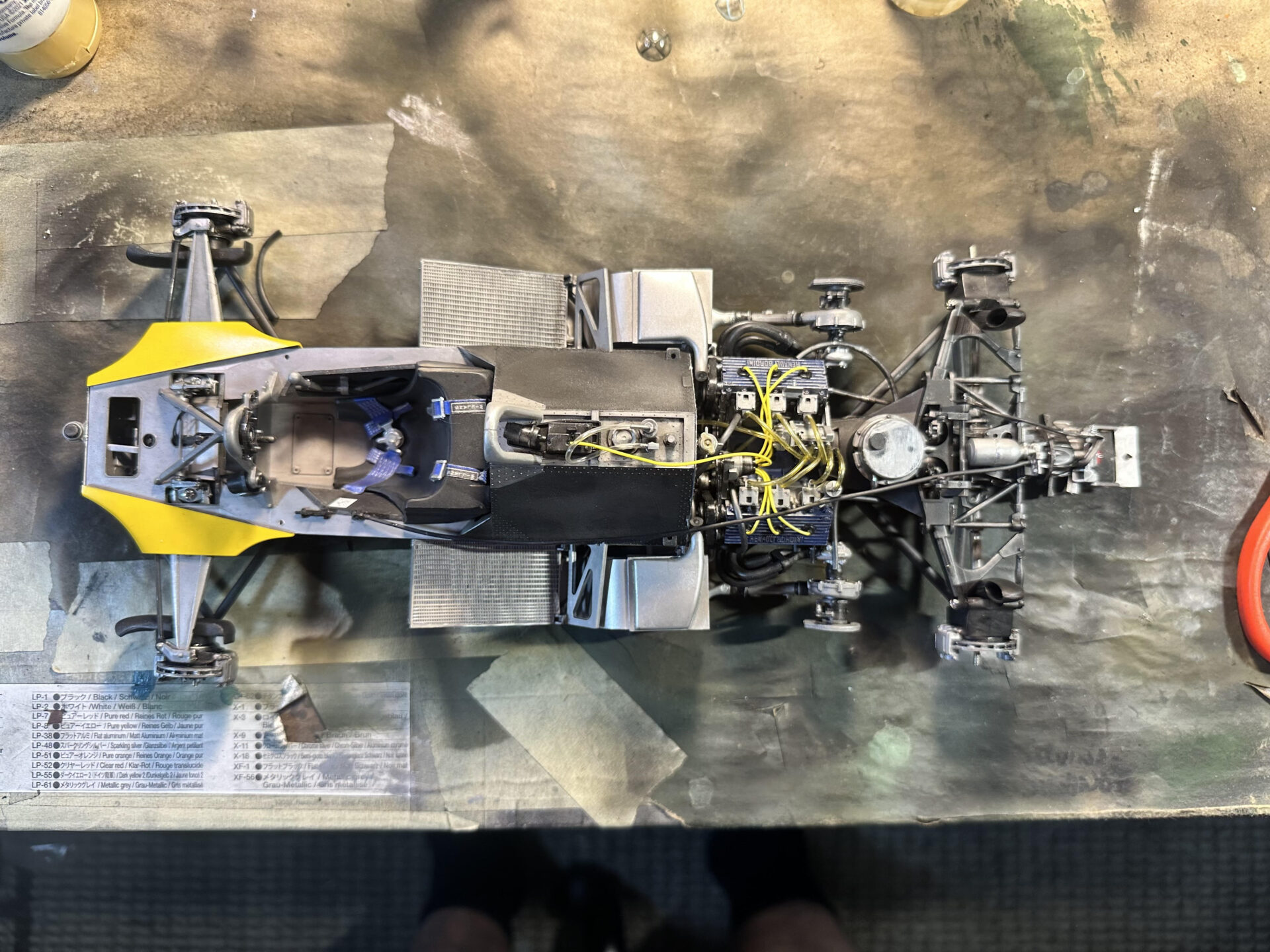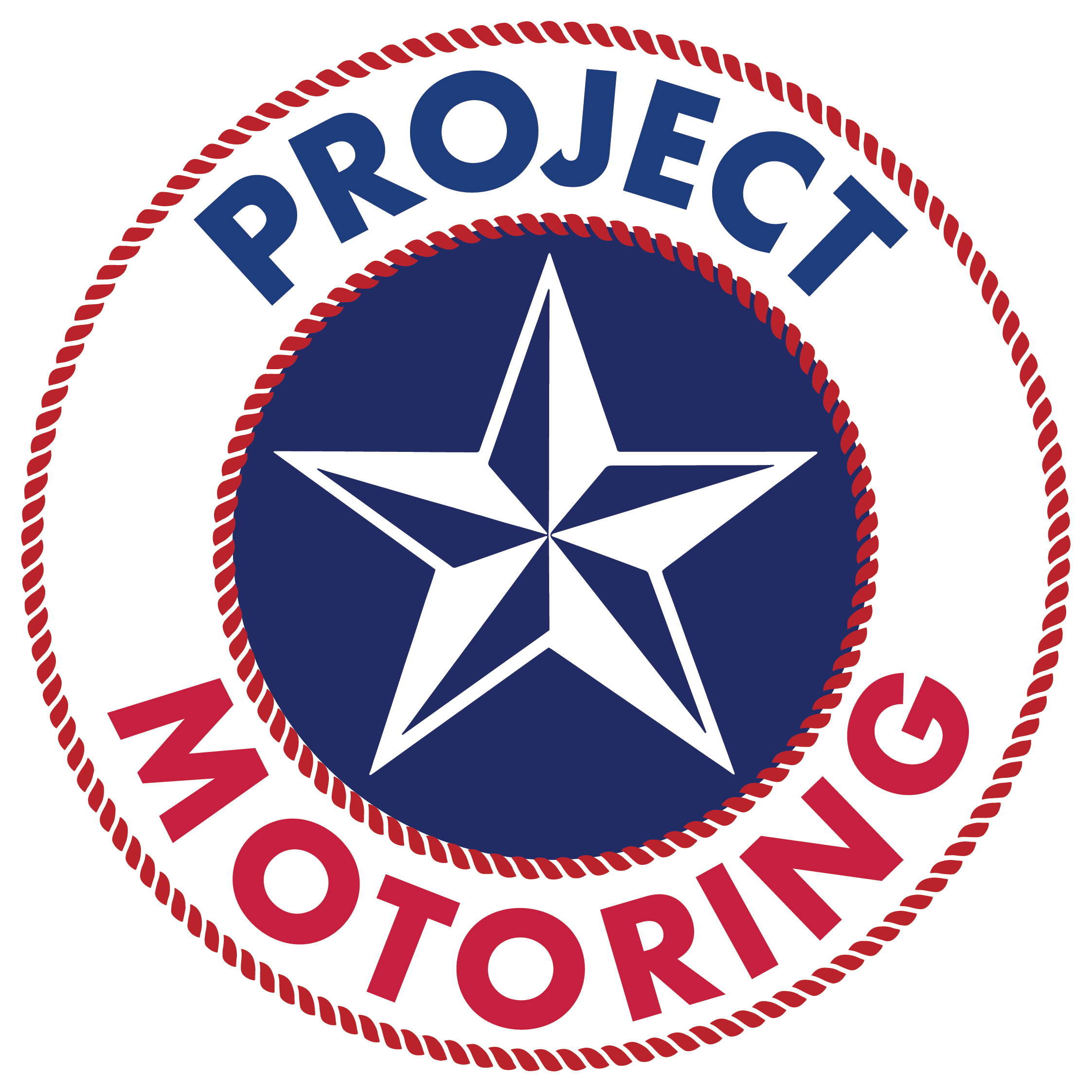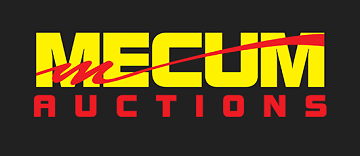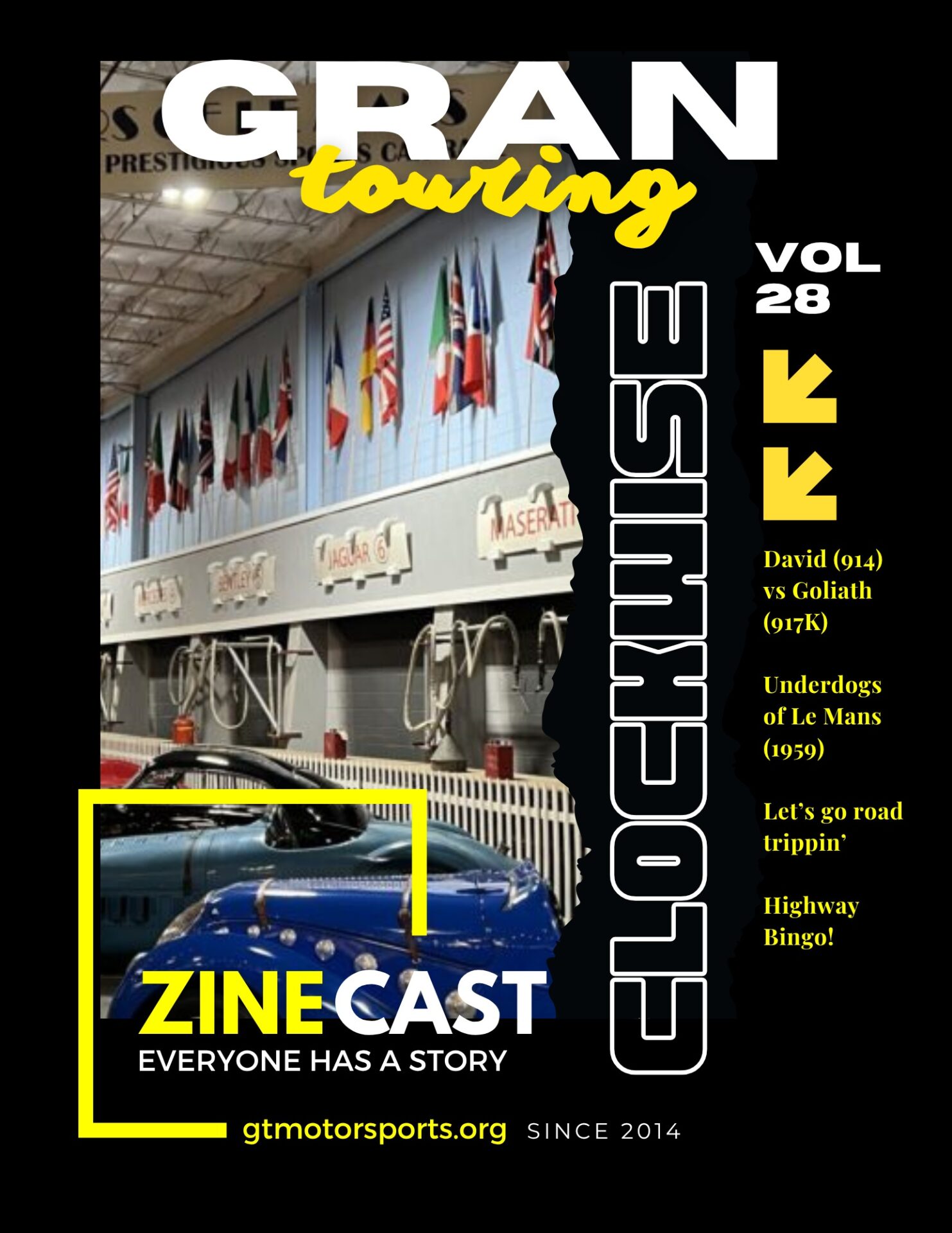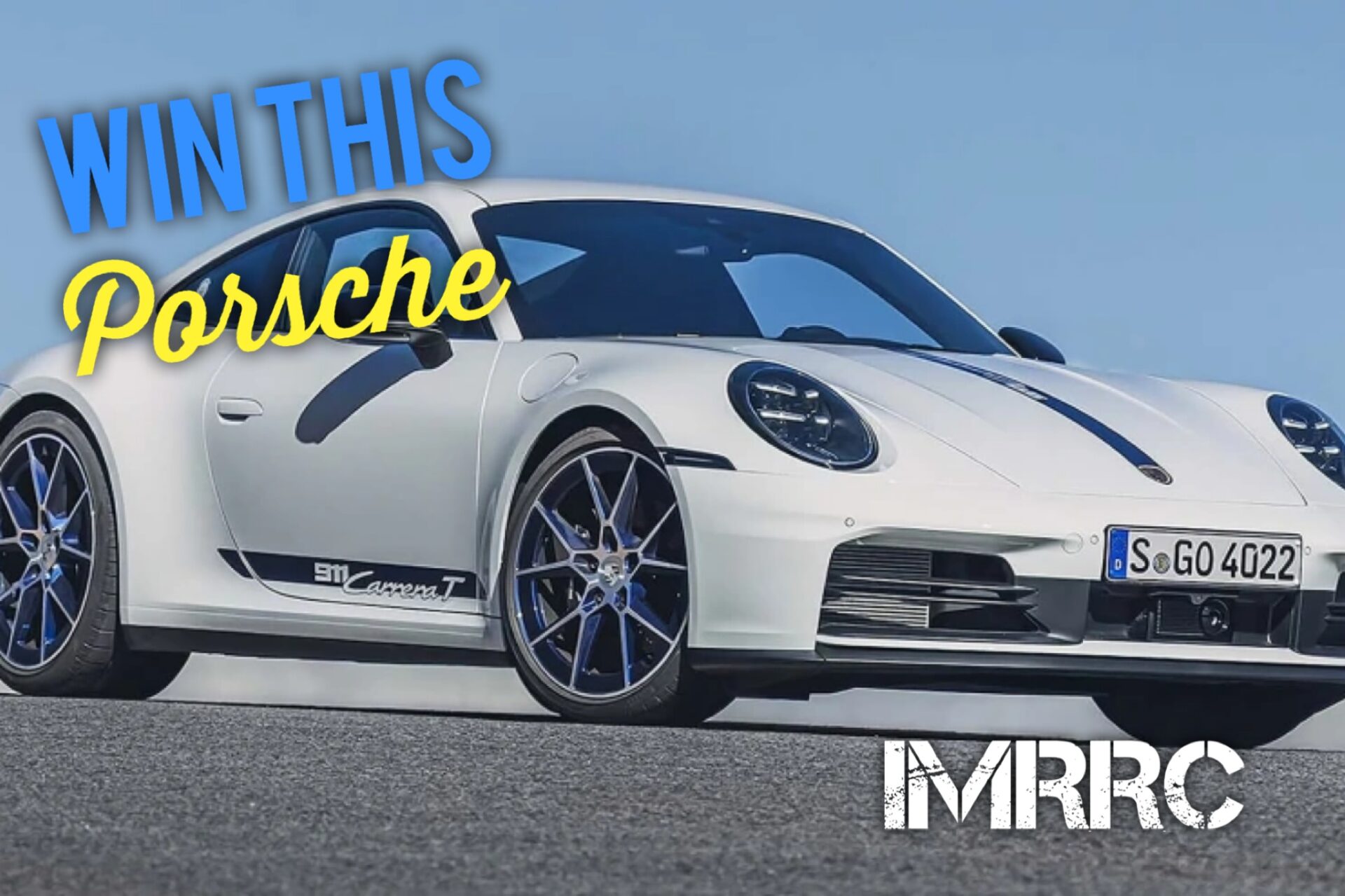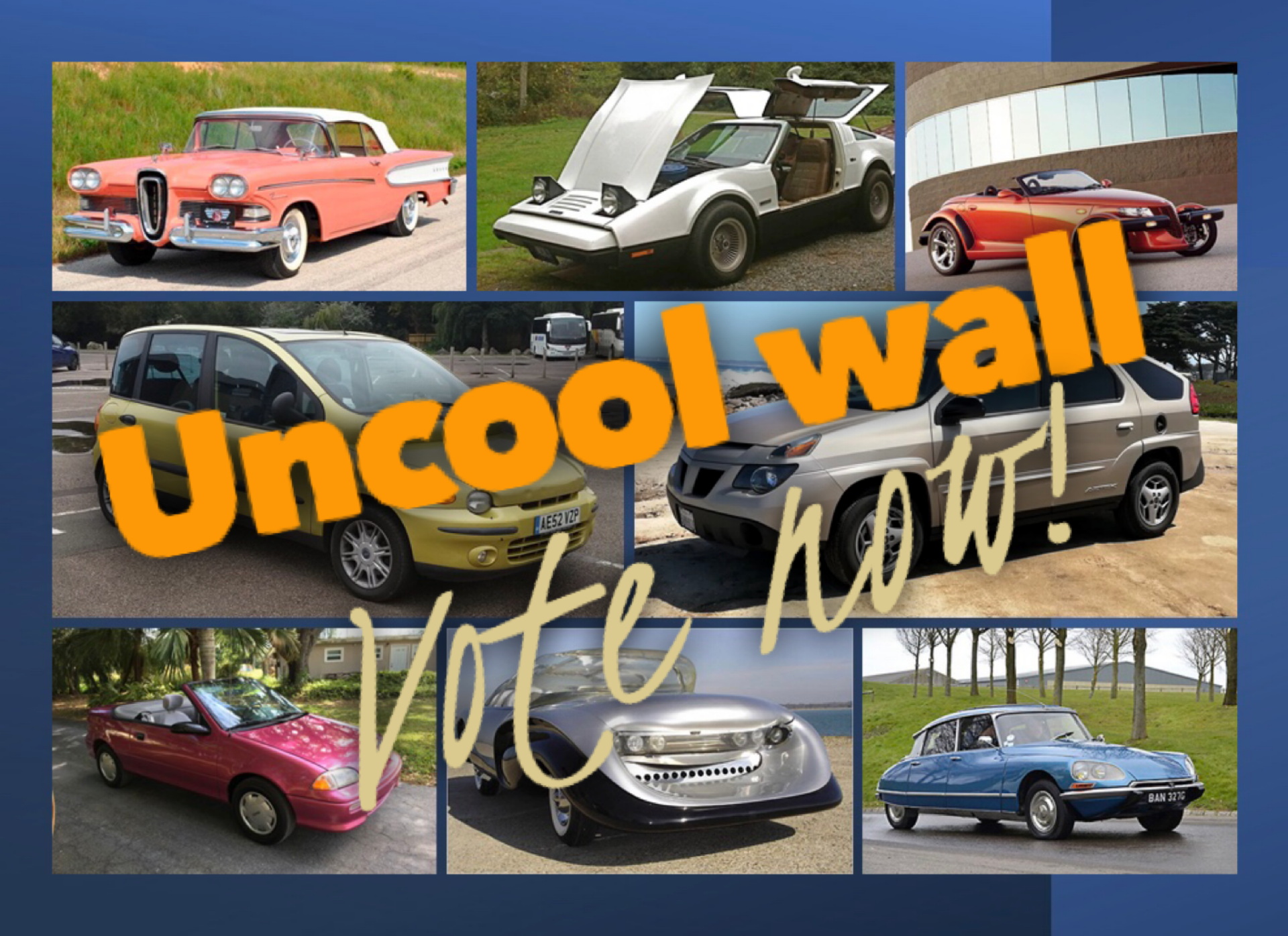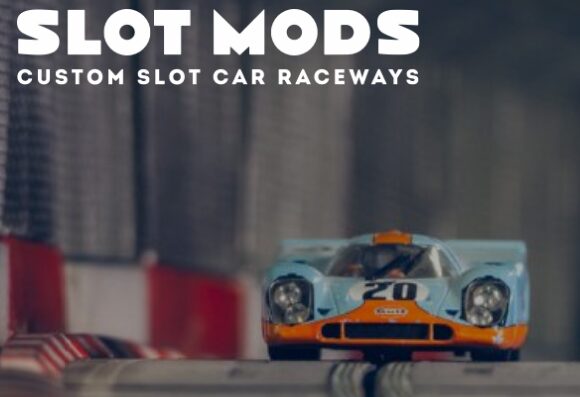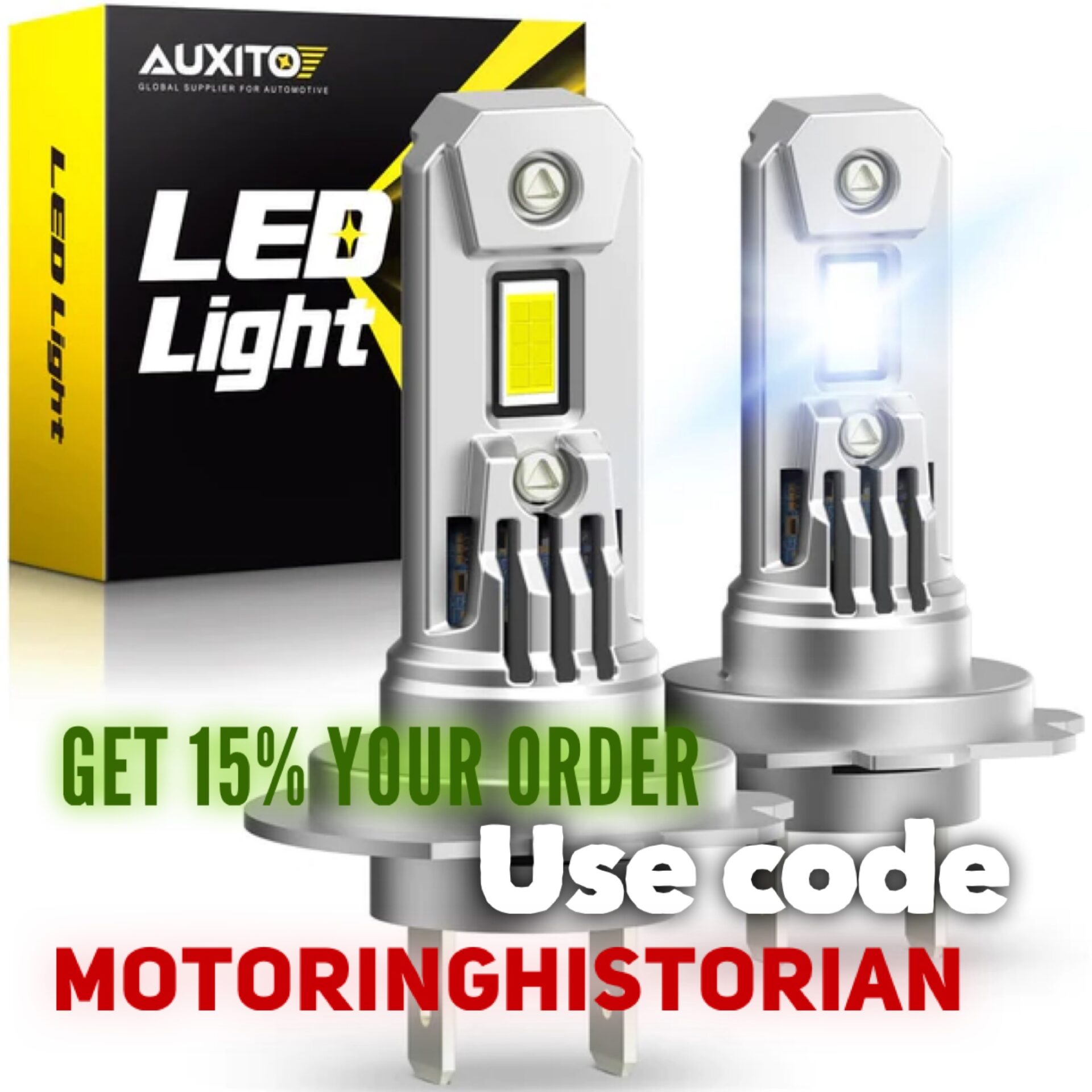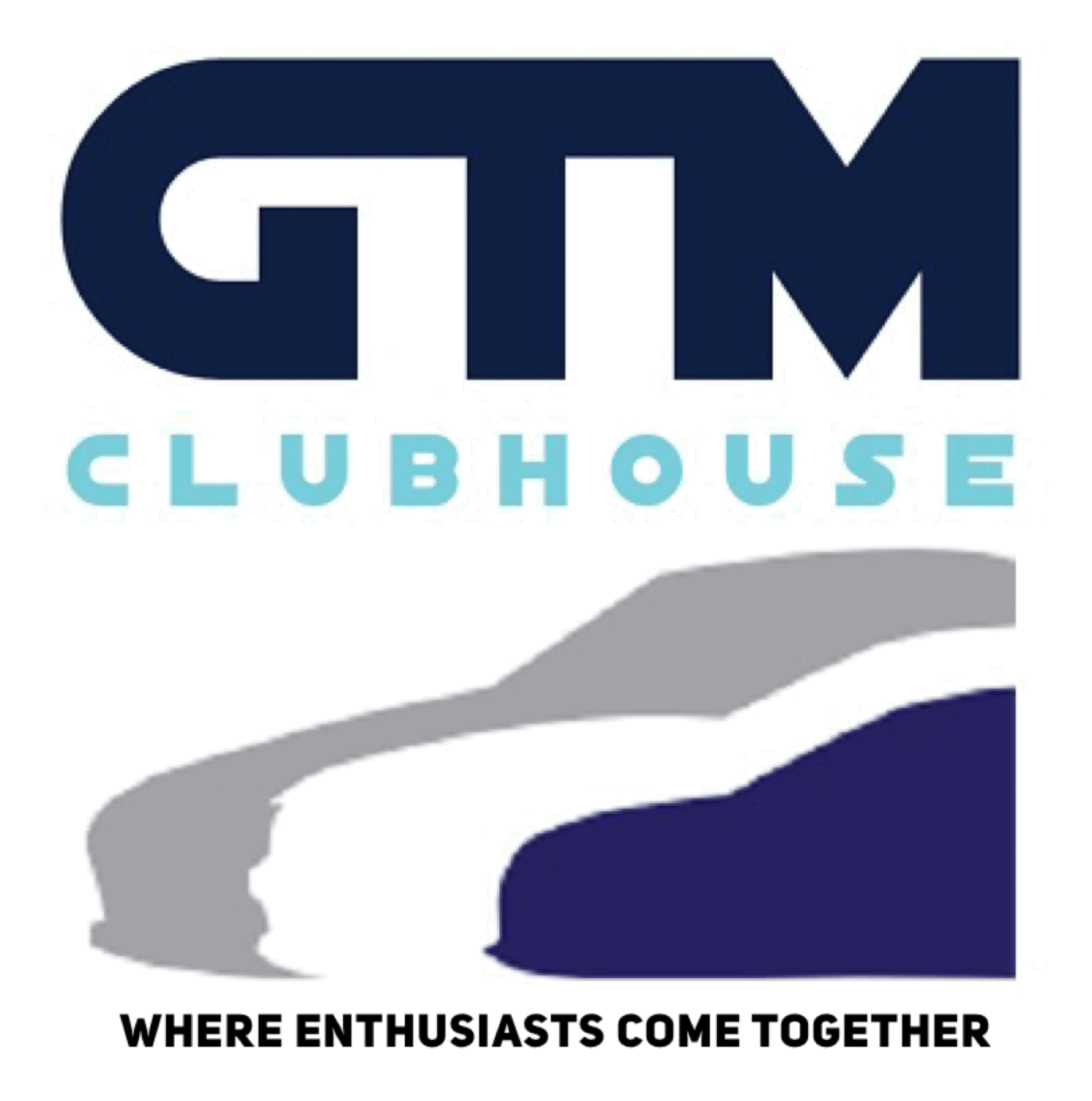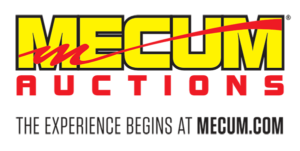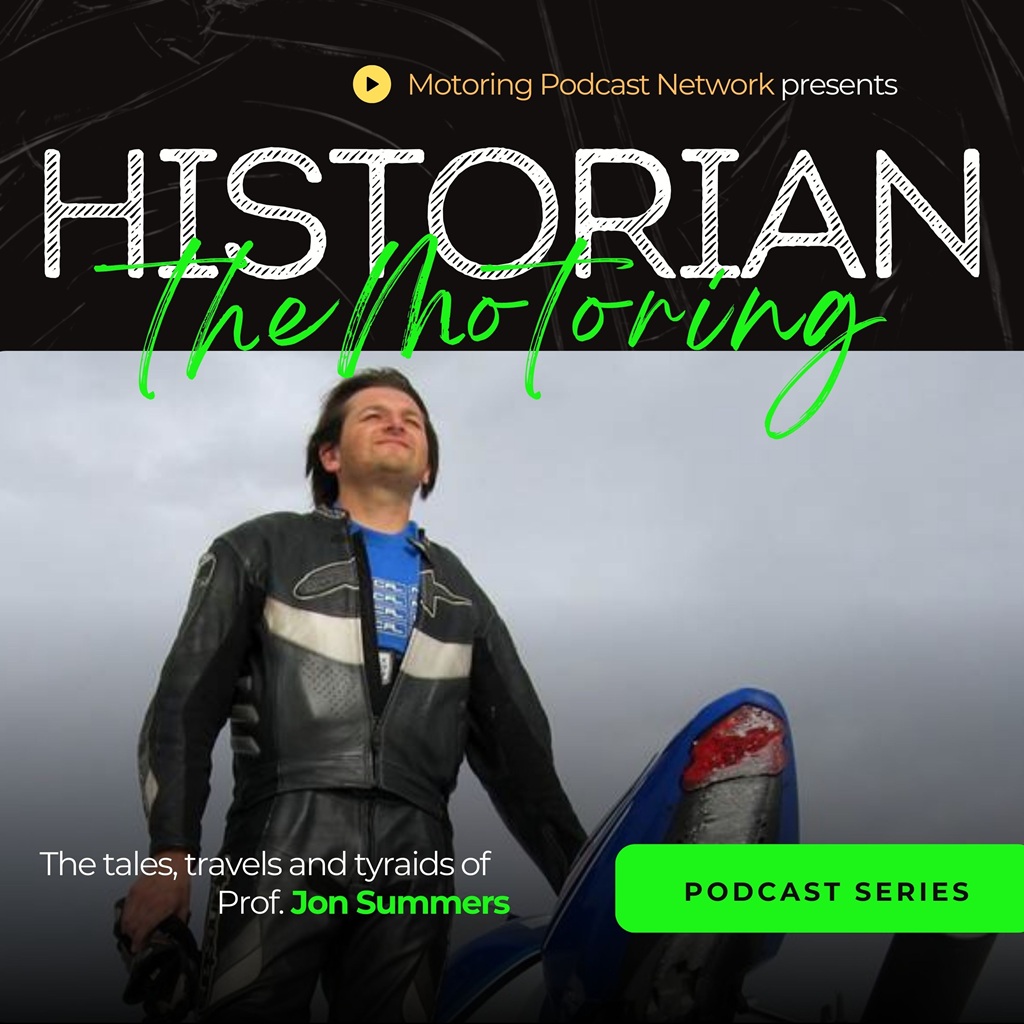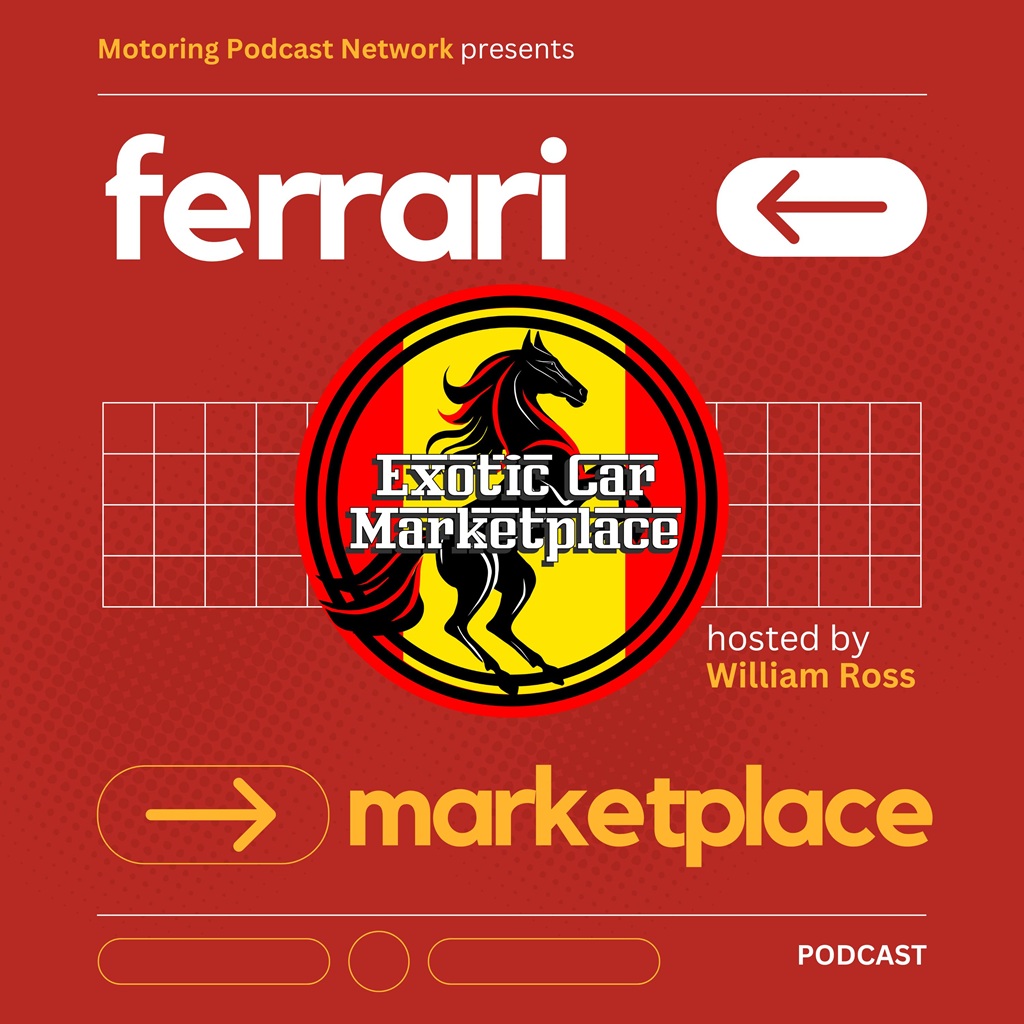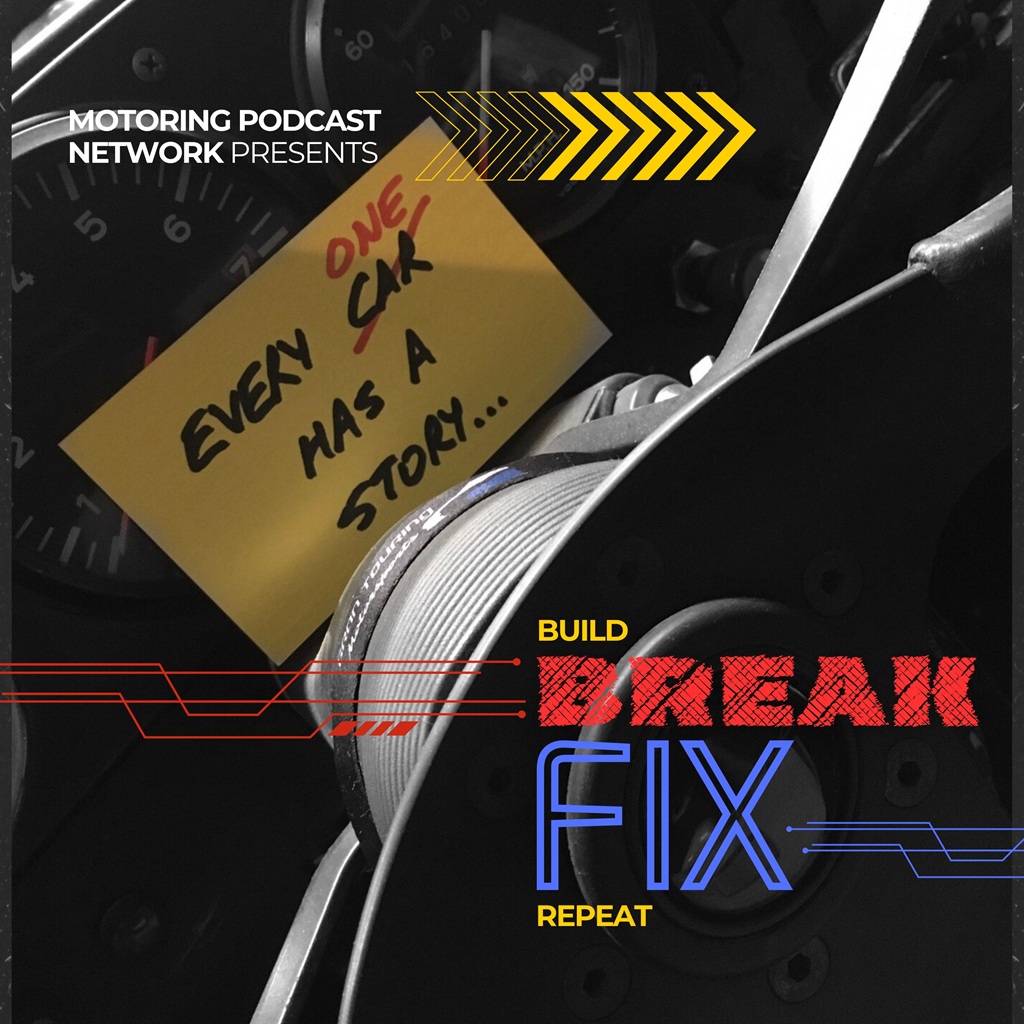From designing iconic Grateful Dead tees to co-founding one of America’s most celebrated concours events, Rick Schad’s creative journey is anything but ordinary. With over three decades of experience across fashion, packaging, toys, and motorsports, Rick has shaped industries—and now, he’s shaping miniature masterpieces as the “Pope of Plastic.”
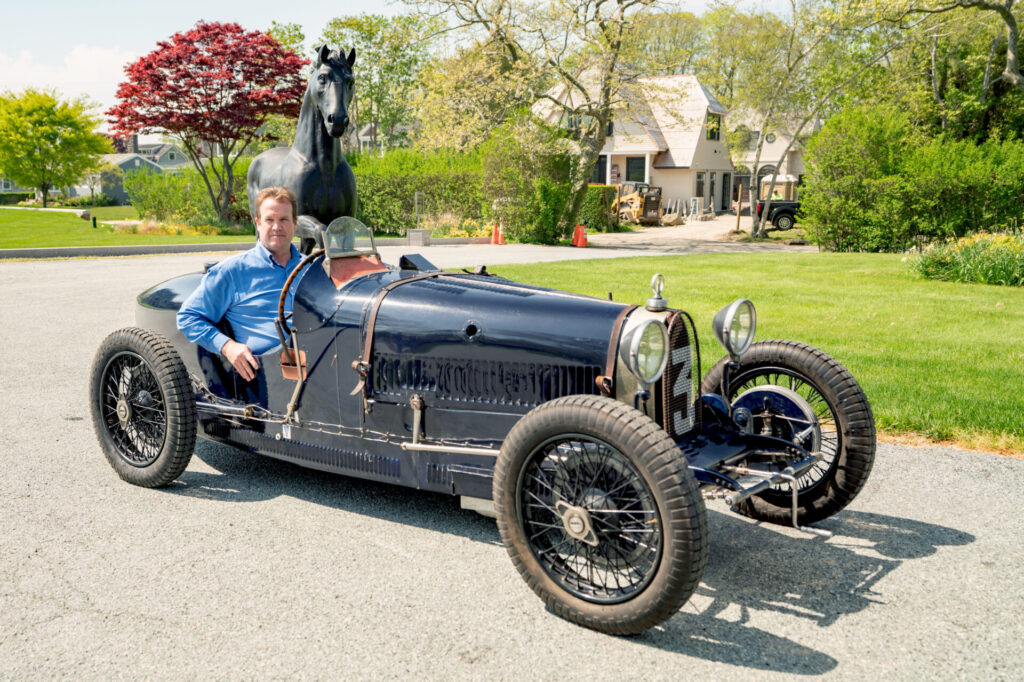
Rick’s professional entry into the car world began with a legendary machine: Ayrton Senna’s rookie Formula One car, the Toleman chassis #2. Despite its reputation as unreliable, this car nearly won the 1984 Monaco Grand Prix in the rain. Rick was tasked with selling it – and he didn’t just list it, he branded it.
Tune in everywhere you stream, download or listen!
 |  |  |
He built a story around the car, created a presentation, and even verified its authenticity against a replica owned by Pink Floyd’s Nick Mason. The clincher? A modified roll bar that matched Senna’s height. Rick’s branding savvy helped sell the car to none other than Zak Brown, who – during the inspection – received the call confirming his appointment as CEO of McLaren F1.
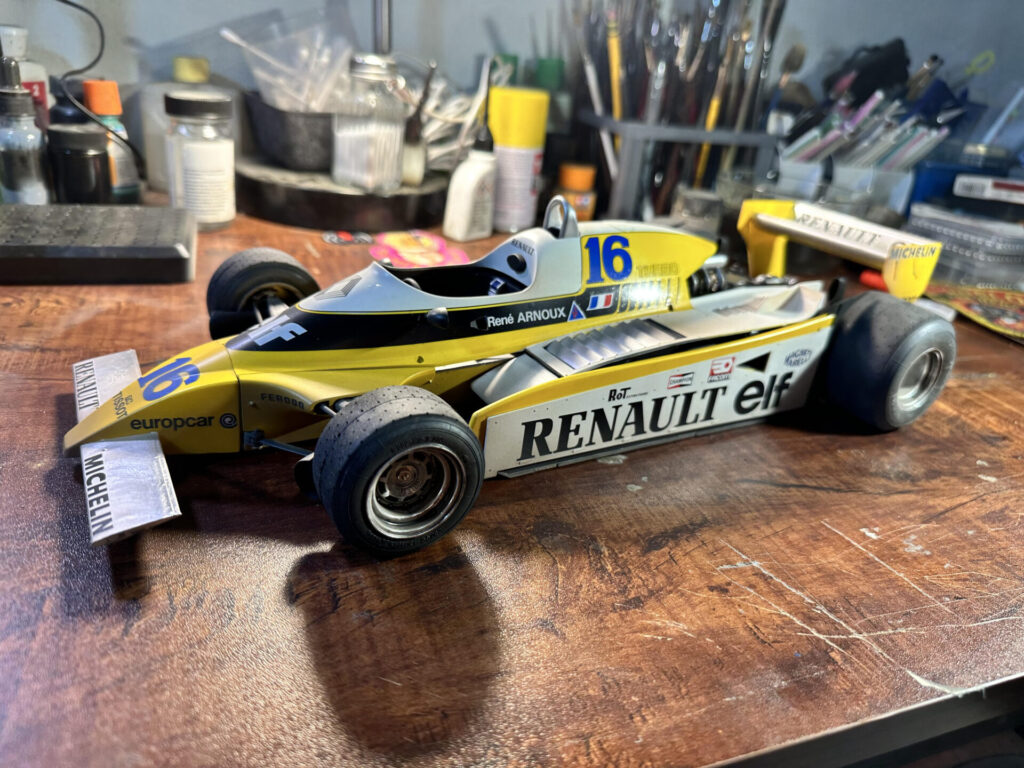
That sale launched Rick into the motorsports world, where he applied his branding expertise to race teams and sponsorships. But his vision didn’t stop there. Inspired by Newport, Rhode Island’s elegance, Rick dreamed up a Pebble Beach–style event on the East Coast. He pitched the idea, built a presentation, and partnered with Audrain Museum founder Nick Schorsch to create the Audrain Newport Concours & Motor Week.
Launched in 2019, it was hailed as one of the most successful first-year automotive events in U.S. history.
- Spotlight
- Synopsis
- Transcript
- Highlights
- Bonus Content
- Learn More
Spotlight
Rick Schad - Professional Modeler for The Pope of Plastic
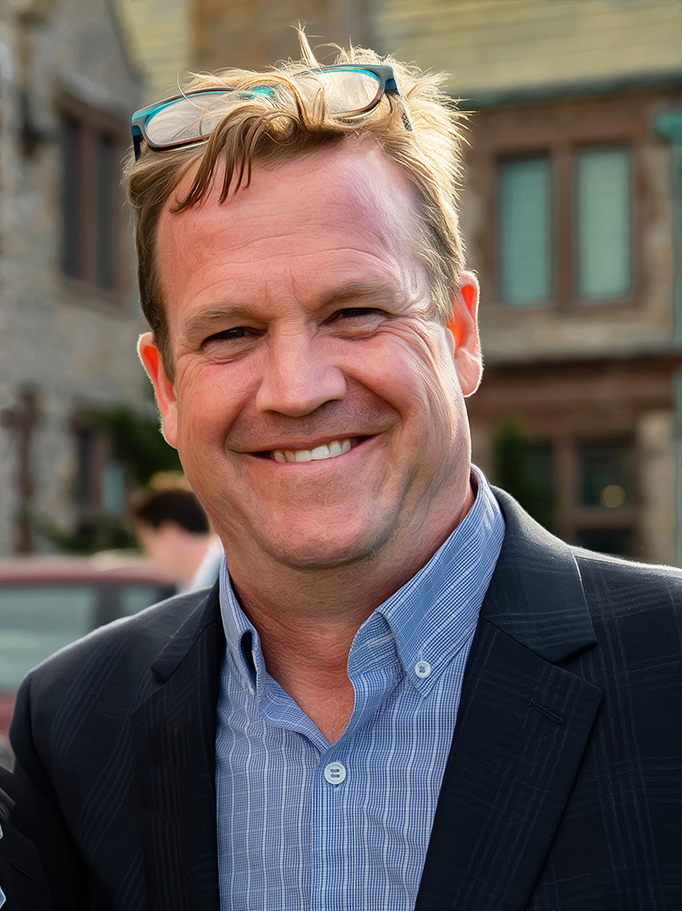
Branding, product, and event design expert with over 30 years of industry experience. I dedicated my life to building a brand new motor week and concours d' elegance. From creating the branding, trophy, sponsors, locations, a-list concerts, TV and radio, celebrities, contract negotiations, and more. Audrain's Newport Concours & Motor Week hosted some of the greatest cars in the world, the greatest brands, and brought in nearly 100,000 people to Newport, Rhode Island. All of this was created from the "napkin sketch" to reality in less than two years, a feat that most people said I could not do, but through perseverance and laser focus I succeeded. I am now on to the next chapter of my career, hoping to achieve the "impossible" again. Who knows where I will land....

Contact: Rick Schad at rickschad@gmail.com | N/A | Visit Online!![]()
![]()
![]()
![]()
![]()
Synopsis
In this episode of Break/Fix, Rick Schad, a professional artist with over three decades of experience, shares his journey from designing for renowned clients like the Grateful Dead and the White House to becoming a top model builder on TikTok. Known as the Pope of Plastic, Rick discusses how he transitioned into the automotive world by selling Ayrton Senna’s rookie Formula One car and later co-created the acclaimed Audrain’s Newport Concours and Motorweek. Rick delves into his early passion for models, influenced by his brother, and how model building played a significant role in his recovery from alcoholism. He also highlights his live modeling sessions on TikTok, where he builds models from various categories, including cars, planes, and tanks, while interacting with his audience. Rick offers tips for beginners and shares stories about his most challenging builds. The episode touches on his aspirations for a Netflix series centered around custom model builds that resonate with personal stories, promoting the art and passion of model building to a broader audience.
- How did you get into the Vehicle Enthusiast world? What was that defining moment? Or Car that Inspired you?
- You got started in models like many of us at a young age, was there someone that mentored or inspired you to deepen your passion for modeling?
- “The Pope of Plastic” – Where did the name come from, and what’s it all about?
- You mentioned that you build live on Tik Tok, do you feel the pressure “to be perfect” while you’re doing that? How does that help your business?
- What would you say has been one of your most challenging builds? – also – is there a bucket list build?
- There’s different levels of modeling and model collecting; Yours are on a whole other level – let’s talk about why people should get into modeling (again).
- What gear should every (beginner) modeler have?
- You do models on commission, how does that work? What do you charge (is it based on the size, complexity or customer requirements, or just hourly?) Do you autograph your models? Plastic models are delicate, how do they get shipped? What if something happens?
Transcript
Crew Chief Brad: [00:00:00] Break fix podcast is all about capturing the living history of people from all over the auto sphere, from wrench turners and racers to artists, authors, designers, and everything in between. Our goal is to inspire a new generation of petrol heads that wonder. How did they get that job or become that person?
The road to success is paved by all of us because everyone has a story.
Crew Chief Eric: Our guest is a seasoned professional artist and visionary based in Rhode Island with over three decades of experience shaping various industries. From designing iconic t shirts for clients like the Grateful Dead and the White House To innovating in the golf industry with the world’s first fashion belt equipped with a divot tool, Rick Schad’s creativity knows no bounds.
His journey led him through packaging design, toy innovation at Hasbro, and even culminated in co creating the acclaimed Audrain’s Newport Concours and [00:01:00] Motorweek. And he’s here to tell all of us about his story. So with that, let’s welcome Rick to BreakFix.
Rick Schad: Man, great to be here. Thank you. Thank you for the, uh, introduction.
I sound really important.
Crew Chief Eric: And hiding in the background, but not for too much longer, is one of our regular co hosts, to break fix. Let’s welcome back Don Wieberg from garage style magazine.
Don Weberg: Hello. Thank you. Thank you. Good to be here. Good to be here. You know, next time, Eric, make sure there’s some background music going on.
When you introduced me, wave, please. Come on.
Crew Chief Eric: Some nice lounge music, a cigar,
Don Weberg: step this up a little bit, you know?
Crew Chief Eric: Well, Rick, like all good break fix stories, there’s a superhero origin story. So tell us how you got involved in the Vehicle enthusiast world. What was that defining moment? What was that car that inspired you?
Rick Schad: Professionally getting into the car world. I was asked to assist in selling Ayrton Senna’s rookie formula one car, the Toleman chassis, number two, which placed second at Monaco in the rain. And [00:02:00] technically probably should have won that race. Uh, we know the how everything went down with that.
Crew Chief Eric: The one you mentioned is like the worst one he ever drove.
Do you ever think that that’s just kind of ironic? The Tolman? Yeah, it wasn’t the Lotus. It wasn’t one of the MP4s, McLarens or whatever. It was the Tolman, which he ran for like one year and the car was like hellaciously unreliable.
Rick Schad: Yeah, it was a terrible car. He actually won Monaco, but they stole it from him.
And he ran one of the most incredible laps ever there. I spent a lot of time with that car and had to do a lot of research for it because Nick Mason from Pink Floyd thought he had the real Tolman and we had to go to see him and go look at his car and tell him why it wasn’t the real car, which he had spent.
I don’t know at that time, probably 600, 000 on the car. It was a total fabrication. It was built from Tolman parts, but it wasn’t the actual car. The reason we knew ours was, well, number one, we got the actual guys that built the car to work with us. And when we went there and we looked at the actual car, we knew [00:03:00] it was the real car because Senna was fairly short.
The roll bar above his head and back of his helmet. Well, when Johansson took over that car after Senna left and the roll bar was too short, so they cut the roll bar and extended it. So as soon as we walked up to the car, we saw that that had been cut. We knew that it was sentenced. I was asked to sell that car and I took an approach, which was a little bit different than other people.
I literally turned that car basically into a brand and put a real story around it. And I built basically a book on the car. I took my branding expertise. it to the way I would any brand to that car. And that was my first professional foray into the car world was really by the selling that airtime Seneca, which is kind of a crazy story in itself, because I’m very good friends with a gentleman who was Mario Andretti’s long time PR guy, Donald Henderson.
He was a character in the formula one, Indy car, [00:04:00] the whole racing world. And it may easy. One of the. Best branding guys in the world. In fact, he helped create Newman’s own with Paul Newman. And I was on LinkedIn one day and this guy had posted a picture of a motorcycle saying this motorcycles for sale.
And next to the car could see part of like a quarter panel of a car that I knew was a race car. And it was Don Henderson that posted this picture. And I reached out to him and I said, you know, who cares about this motorcycle? What is that? That is. Next to the motorcycle, me making that comment to Don. Don asked for my phone number.
He called me from that day forward, Don and I became very good friends. And it was Don that approached me about this Sena car. And he said, you know, I don’t have the time to sell it. And I really don’t care about selling it. He didn’t know anybody who could kind of take this on ultimately sold that car to Zach Brown.
So then the day that I met Zach Brown there for him to go over the car and he did the car inspection while he was doing the car inspection, [00:05:00] his cell phone ring and he was told that he had just gotten the position of CEO of McLaren Formula One while we were looking at walking around the car. That’s awesome.
That is a true story. Yeah, it was a, that was an amazing, amazing thing. And then it was kind of from there, I got launched into the automotive world first selling that car and then getting exposed to different race teams and people that were trying to build race teams. And again, I was applying my creative hat and my branding hat to help teams raise money and get sponsorships.
That’s kind of how it all started. It actually started for me responding to a picture on LinkedIn . So. And then I started going to different car events associated with building teams and things like that in the racing world. But I was going to all the major car events and I came up with the idea of why shouldn’t we have a car event like a Pebble Beach here in Newport, Rhode Island?
Because Newport is so beautiful and it has the mansions and the lawns and In my mind, I kind of painted [00:06:00] this picture as to what something like that would look like. And do like I do with any idea I have, I actually put it down on paper. And I take that idea from that concept that I’ll write in bullet point.
I’ll start talking to some people about it, and it looks like it has some kind of legs. Then I will go ahead and do a formal presentation around the idea, and then that is my selling tool to sell whatever it is creatively that I’m trying to do. Ultimately, I met Nick Schorsch, who was the founder of Audrain Automotive Museum.
He basically said, you know, I’ve always wanted to do something like this. And he had been thinking about something similar. He said, you know, why would I compete with you to build an event? Why don’t we do it together and I’ll hire you to do it. And we started that journey in 2017 and it took until. 2019, we launched the first Audrey Newport Concord Motor Week, and it was heralded as one of the most successful first year automotive event ever held in the United States.
It was very difficult thing to do over such a short period of time and make it look [00:07:00] like it had happened year after year after year. And that was probably one of the pinnacles of my life was building that event.
Crew Chief Eric: And you know, what’s fun about this is we’ve now painted a picture of Rick, the adult, but that’s not what we came here to talk about.
We came here to talk about your alter ego, the Pope of plastic. And we’re going to dive more into that, but that starts with little Rick playing in the basement, you got started in models. Like many of us at a really young age, who brought you to that? Was there somebody that mentored you or inspired you to deepen your passion for modeling?
And obviously that carries into a passion for car.
Rick Schad: I was born to be an artist. And my mom saw that very early on that she had a son that she felt had talent who could end up being something in the art world. But the model building started when I was really young. I mean, I built my first model in 1975.
It was a model by Ravel. It was a submarine. I did an absolute terrible job. You know, I was horrible. But the person who really influenced me in model building was my oldest brother, [00:08:00] David. He used to build incredible models. And he would never let me watch him build a model. He’d never let me see. And I would sit outside of his bedroom, begging to come in to look and watch him build models, but he would never, ever let me when he would go to school or I’d get out early and I’d get home before him, or he would go out someplace.
I’d sneak into his room and I would look at his models and I’d look at the paints, and he was really my inspiration for model building. I wanted to be like him and build models the way that he built models, but because he wouldn’t help me, I had to discover it kind of on my own. See, the tables have turned now.
Now my brother is jealous that I build models professionally. And he’s probably one of my biggest fans and I share pictures with him all the time and we go back and forth. He was like, you know, maybe I should have let you watch me build models. He goes, but I think you figured it out on your own, you know, better than he ever could.
So my brother was my first inspiration. And I don’t talk about this a whole lot, but sometimes I do. And, you know, I was an [00:09:00] alcoholic and I’m recovered and not recovered. You’re always recovering. But. Model building essentially saved my life. I was in a deep depression. I was drinking myself to death and I had to get back into something that was positive.
I got back into model building and it’s not the only thing that saved my life, but huge part of it and doing it every day and doing something positive. And then when people were giving positive feedback on what I was doing and were encouraged by what I was doing, especially when they hear what I’ve kind of gone through, To see what I’m doing.
And then it inspires them to kind of do the same thing. And the bigger picture is that it’s much more than model building. You know, a lot of people are looking at this as a healthy alternative as well. You know, I have a lot of people that were addicts and things like that, and they need something positive to do.
And it’s, it’s incredible. I mean, people that are trying to do something that can ultimately kind of change their lives. And that’s an important thing to know. And it’s really on TikTok. It’s really what my community is about. It’s not about, Hey, look at me. I’m the best model builder on [00:10:00] TikTok or I’m this, I’m that, I’m the Pope of Plastic.
It’s encouraging people to come together creatively to just be part of something. And if I can kind of be that ringleader to let people know, Hey, you know, there’s fun things to do that other people can enjoy you doing that are positive versus stuff that’s negative, then that’s really what it’s all about for me.
And I’m, you know, and I make a living at it, you know, I’m not going to lie. I get money. Tick tock pays me money and I sell models. As far as cars go, I grew up having an affinity for racing. My cousin was Cale Yarborough, the famous NASCAR driver. I grew up watching Cale race. And I was also a huge fan of the Indianapolis 500.
And like every kid, I had all the matchbox cars and I would set up in the kitchen and pretend I was running the Indianapolis 500. And I just always loved cars, but mainly I loved cars because of their artistic form. So I spent a lot of my childhood drawing cars, sketching [00:11:00] cars, dreaming of one day being able to design a car, which I’m not a car designer, but I’ve been friends with a lot of car designers.
I just always saw the art in them. And then when I got the chance to build car models, it’s just incredible now to be able to build these cars that I dreamed of as a kid. And now I’m able to do it at a level that most people aren’t. I mean, I guess if they dedicated themselves, they’d be capable of doing it.
But most people don’t have the time or they’re not capable of doing it artistically. So it’s just a huge passion.
Crew Chief Eric: Well, Don, I think he opened the door for a pet stop question. And I think, you know what I’m going to ask him, right?
Don Weberg: No idea.
Crew Chief Eric: It’s one of our classics, Rick, which is as an artist, especially, I love hearing the answer to this.
What is the sexiest car of all time?
Rick Schad: Well, I can’t say one car, but I can say one brand and that without a doubt is Ferrari. And I know that would be a popular answer for most people, but. The thing about Ferrari is it is 100 percent art from the engine to the chassis to everything that they do with those [00:12:00] cars, especially the classic Ferraris when Enzo Ferrari, you know, his vision, his passion was always about the sound, about the look, about what it looked like when it was going down the road, what it looked like from behind, what it looked like, you know, the front, you know, he said, you know, a Ferrari emulates a beautiful woman.
I’ve done some public speaking and things and I’ll talk about Ferrari and I will draw the silhouette very quickly and I can say, okay, imagine a woman laying on her side and here is the hip and then it goes down and then you have the shoulder and then it goes all the way out into the nose of the car down to the road.
And if you look at that shape, what you can look at is basically like a beautiful woman on her side, and then you can actually start adding wheel wells and everything else. And you can watch it transform into the actual shape of something that looks very similar to a Ferrari. And I think that’s a good example of the way that design process was done back in the day.
Ferraris are so fluid and so sexual. And even if it wasn’t Ferrari, if it was another brand that had kind of that [00:13:00] same
Crew Chief Eric: Well, the car that comes up a lot, and you’d probably not be surprised by this, is the E Type Jag.
Rick Schad: Yeah. Enzo said that the Jaguar was the most beautiful car he had ever seen. Kind of the same principle when you look at it.
They’re almost liquid in their form. That’s an incredible thing. So, It’s hard to say one because I think all Ferraris are beautiful. I’m not as much of a fan now of the more modern Ferraris. I’m more of the classical Ferraris. I think when Ferrari went public, a lot of things changed. I don’t think you would have ever seen an SUV from Enzo Ferrari.
I don’t think you would have ever seen an electric Ferrari. And I think he was very true to his passion. And he kept that passion alive all the way until he died. When he died, Ferrari changed immensely. I think. I think at the core of the passion is still there, but especially amongst Ferrari fans. I mean, I’m still a fan of Ferrari.
I’ll always bleed Ferrari red, but I’m not as much of a fan of the new stuff as I was at the old stuff.
Don Weberg: You know, Rick, listening to you about [00:14:00] Ferrari, et cetera. I think we can all agree here that the best looking Ferrari ever made, you know, correct me if you think I’m wrong. The Mondial Troop. Oh, stop.
Rick Schad: Oh yeah.
It was the greatest Ferrari ever done. That family four seater Ferrari. There you go. It looked like a squash toaster.
Don Weberg: I love the cheese grater on the side. Grate your Parmesan right there. It’s terrific. Yeah. There’s
Rick Schad: definitely visions of the 250 GTO and that. Yeah. It’s just unbelievable. Great car. The Mondial.
Don Weberg: I was curious about your moniker, your name, the Pope of Plastic. Go into that for me. What the hell is the Pope of Plastic?
Rick Schad: Well, the Pope of Plastic came about, first off, I wasn’t working, I was looking for work, still am, and I wanted to get back into model building because I was always able to sell models kind of on commission on the side to make extra money.
And when I couldn’t find work, I said, well, look, I got to do this seriously. And if I’m going to do it seriously, I need to be on different social media sites. I was just sitting there one night. I said, I got to come up with a name. And I went through all [00:15:00] these different iterations of what it should be called.
And then I was like, you know, it should have something to do with plastic. Plastic is a great word. A lot of people relate to plastic. I said, what goes with plastic? And I went through all these different names. And all of a sudden I hit upon, what would be the hierarchy of plastic? If plastic was a religion, what would the hierarchy be?
And I was like, well, the top would be the Pope. As soon as I said Pope, I went Pope plastic, Pope of plastic. I was like, bingo. There it is. I thought it was funny. I thought people would find it humorous and it’s tongue in cheek. I was never trying to say to people, Hey, you know, I’m the best model builder in the world.
Look at me. It was more a funny, humorous thing that would grab somebody’s attention and also something that I could build a logo around. And so I started Popoplastic first on Instagram, really didn’t get much traction. I wasn’t really putting a lot of work into it, but a friend of mine said to me, said, Hey, you should go on Tik TOK because Tik TOK is all live.
He goes, people would love to watch [00:16:00] you build models. And I was like, you know, what am I going to do on Tik TOK? I don’t dance. I don’t, I own a cat. I don’t do makeup pointers. He said, no, he goes, you could build an amazing community on Tik TOK. Forget about what you hear about the media and everything.
People are there to discover things. And especially watch people do things live, whether it’s oil painting or DIY things or crocheting or whatever it is. And he said, you should give it a try. He goes, you know, you have a good sense of humor. Obviously, I know what I’m doing when I’m building models. And I said, all right, what the hell?
I’ll go on there one night. I went on and set up the account and never thought that anybody would follow me. And within like a month, I had a thousand followers and I could go live. And when I started going live. People just hooked right into it. It was incredible. To this day on TikTok, people don’t even know my real name.
They call me the Pope. I’m the Pope. That’s all they refer to me as is the Pope. Pope this, Pope can you answer this question, Pope can you do this. And it’s really incredible [00:17:00] because it’s turned into a community of people that are just fascinated with model building. A lot of older people who hadn’t built a model since they were in high school, and they’re looking for something to do.
And I I’ve gotten a lot of people back into the hobby. I’ve gotten a lot of people to bring their young children in to watch me do what I do. A lot of the people who follow me have become friends with each other. It’s a pretty interesting thing. So the purple plastic is really turned into a brand. For me,
Don Weberg: now, Rick, forgive me.
I haven’t seen any of your tick talk, but I’m curious. You say people watch you build the models. You put them together. Are you showing them specific techniques on painting on bluing on how are you doing this? What are you building it with?
Rick Schad: They’re literally watching me build a model from start to finish.
So they’ll tune in and say, if I’m unboxing the model, I’ll say, okay, we’re going to build a new model. And my models take weeks to build. to build. I don’t build them overnight, so they’ll watch me from day one where I’ll take the first piece of plastic out and they’ll watch me do the whole process. So I will announce [00:18:00] each day.
Hey, today I’m going to be doing weathering or today I’m going to be building the engine. Today I’m going to be doing the chassis. So people will sometimes tune in for specific things that I’m doing and they’ll have specific questions. But most of the people watch me, watch me almost like it’s a television series.
They want to watch me from the start and they don’t want to miss a single episode of me building. And I usually build live three times a day. And I take a lunch break. I treat it like an actual job, which it is for me. And then the customers that are ordering models from me, they get the opportunity to see me build their model live.
They find it very fascinating and a lot of people order models from me now order it because of that reason. They want to watch me build their model. And then when they get it, they’re excited because, you know, they’ve seen me do the whole thing from start to finish. So it’s really unique and it’s a very, very positive community that I’ve built.
You know, a lot of those people become friends with each other, which is really, really cool.
Don Weberg: So it obviously helps your business then.
Rick Schad: It is my business, and it’s [00:19:00] why it scares me when I hear them talk about getting rid of it, because I can honestly tell you on all the platforms that I’m on, TikTok is the only one I don’t think I’ve ever had a negative reaction.
comment. I’ve never had a negative thing happen. And TikTok is very strict. I can’t sit there and talk about drugs or things like that. They’ll yank you right off. So you have to really be very measured in what you do on there. And for what I’m doing, I think that’s a very good thing. I pride myself on building a very positive community on there.
Don Weberg: The way you’re describing it. Do you feel a lot of pressure to be like perfect on spot? Click, click, click, click, click.
Rick Schad: I build like I would if I were just sitting here by myself, except I talk to the people. The thing they love the most is when I get angry because I get mad a lot when I’m building and I have been known to throw things and I’ve been known to drop a few F bombs here and there.
Crew Chief Eric: Usually when the tester’s glue keeps your fingers united, right?
Rick Schad: Yeah. Their favorite thing is when I drop things on the floor. Because that’s like [00:20:00] the worst thing in model building is when you drop something on the floor, especially a small piece and they can watch me progressively get angrier and angrier.
They just love it. I mean, cause it’s real. Can I tell them all the time? What if I were at your job standing behind you, watching you work all day and making comments, you know, how would you do, especially I’m doing. Stuff that’s very, very tedious. I’m wiring things. I’m making things look extremely real.
I’m doing the gauges on the instrument panel, things like that. And it’s very, very tedious. So you can get very angered while you’re doing it because you get frustrated, but it’s very, very real what I do. So it’s not like your normal YouTube channel, where everything is scripted and you know, Oh, okay. I’m going to put these two pieces together and go off camera, build everything to come back and it’s, you know, all put together.
They’re literally watching me from start to finish and they get to see the good, the bad and the ugly all the time. One thing that I did a week ago, which was really, really cool. I came up with [00:21:00] the idea to do something called the F bomb marathon. I said, here’s the idea, everybody. I said, I’m going to let you vote on a model kit.
I’m going to pull out 10 model kits. You guys pick the model kit. Right after the Kentucky Derby in, I’m going to come on here on live and I am going to build from start to finish without taking a break for as long as it takes. I don’t care if it takes five hours, 10 hours, 12 hours, 24 hours, whatever it is, I’m going to build a complete model for start to finish.
And we call it the f bomb marathon because you can be guaranteed that I started dropping f bombs the more hours accumulated. And let me tell you, it was one of the most watched things I’ve ever done. I had over 140, 000 people watch over the course of 12 hours. And I built the model from start to finish in 12 hours.
And at the end, in the 12th hour, I auctioned the model off. And then they got to take the model home. But it was really cool. I’m always doing fun things like that, coming up with different contests to give stuff away.
Don Weberg: What was your favorite model to build? What
Rick Schad: kind of car was it? Well, I build [00:22:00] everything.
I build whatever I’m hired to build. I build cars, planes, trucks, tanks, boats, whatever it is I get hired to do. So, I do do a lot of cars. My favorite car that I’ve ever done was an Alfa Romeo Spyder race car from 1934, I think. It’s beautiful. It’s a beautiful, beautiful model. It’s a 1 12th scale, but it has every hose, a lot of scratch building.
It looks exactly like the real thing. And I did it post race. So it’s dirt with the mud and the grime. It’s a beautiful, beautiful model. I’ve done so many though. I get asked all the time. I, even today when I was live, they were like, Oh, what’s your favorite model that you’ve done? I love every single one of them that I do.
Just for this year alone, today I finished my 22nd model since January 1. That’s a lot of models. And when you see my models, it’s pretty incredible. As I’ve been able to do that many this year, but I do it every day. I do it probably 60 hours a week.
Crew Chief Eric: That’s incredible. Dovetailing off [00:23:00] of what Don was just asking you about, what would you say is maybe one of your most challenging builds?
The
Rick Schad: most challenging build I had to do was I was hired by the United States Marine Corps to build an entire squadron of Harrier jump jets for the 50th anniversary of the Black Sheep squadron, and these were 132nd scale aircraft. In their configuration. So I had to do everything custom to make it look exactly like those, but I don’t build models that just look like the thing I’m building the engines to where they’re all wired.
The cockpits are all perfect. The wheel wells are all plumbed with hydraulics. So to do a whole squadron, which was six aircraft. At one time was absolutely insane. It took 14 weeks to do them working every single day, at least eight hours a day, sometimes 10 hours, sometimes 12 hours a day. It was insane.
That was a pretty crazy project.
Crew Chief Eric: And then kind of thinking to the future, [00:24:00] because the year’s not over yet. What’s on your bucket list? What do you still want to build?
Rick Schad: Well, I actually have it here. I haven’t started it yet. I have to find a customer for it because it was. A gift from one of my fans. I just got a one 12 scale Bugatti type 37.
I want to do that. Wanted a model of that car. I’ve actually driven it before the real one. And I’ve always wanted to do one. So that’s one that’ll be coming up at some point. I’ll find a customer for it and I’ll end up building. I can’t build unless I have a customer for it. Cause it takes too much time and I have to.
You know, get paid for what I do. The other thing that I’ve always wanted to do, and I will get the opportunity, I’m not sure if it’ll be this year or next year, probably the end of this year, is a four and a half foot long Titanic, with all working lights, working steam funnels, sound, the whole nine yards.
Crew Chief Eric: Does it crack in half? No, I’m not going to do
Rick Schad: the crack in half version, but so I’m going to be doing that. The model’s already been purchased. I’ll get it at some point. I, you know, I’m, I’m fortunate that I get to build a lot of really cool models. [00:25:00] And to be honest with you, I’ve had a lot of fans ask me, Hey, what model have you always wanted to build?
And then I’ll tell them and miraculously it’ll show up at my house. So I have basically all the models I’ve ever wanted to build. You know, I just have to find customers.
Don Weberg: How many models are in your house unbuilt right now?
Rick Schad: Um, over a hundred, but they’re all for customers. So they’re not mine. They’re right.
They’re just waiting. I have a waiting list. And then a lot of the times people send me models every day. I had a model come today. They’re just because they want to give me a model. All week long, I build the big complicated models. On the weekends, I’ll do small models, something I can build in two days.
So those are models that the average person can kind of afford. And I’ll auction them off. Or I run contests and sometimes I’ll build a contest winner’s build on the weekend.
Don Weberg: Where do you auction
Rick Schad: these off? TikTok? TikTok, yeah. I tell them Sunday at 7 p. m. I’m going to auction this off and tune in the way that it works is they have to place their bid in the [00:26:00] comment section and I bet everybody before I say if you’re going to bid, you have to message me.
You have to understand how it works. You have to be ready to pay as soon as the auction is over with. And it’s worked out really well for me. I’ve never been scammed by anybody. I always have bidding wars. in there, which is really interesting to see. I have some guys that have almost 10 of my models, which my models are expensive, the 500 to 800 model.
So I’ve got guys that collect my models and, but it’s fun because the small inexpensive models, it gives the average person a chance to own one of my models. Models, which is pretty cool. So
Don Weberg: where do you find these fits? I mean, are these Les AMTs? What are we talking about?
Rick Schad: We make a lot of fun of a MT and MPC and the hurdle.
A lot of ’em, the customer will buy the model, have already bought the model. Maybe it’s a model that maybe even their father owned or something and would never built, and they’ve always wanted to see it built. Or it’s a model of car that they wanted as a kid, or they drove in high school and they’ll find the kit and they don’t [00:27:00] have the skills to build it.
So they send it to me. Same thing with airplanes or tanks or whatever. The customer buys the model and then they send it to me or I find the model for them and then they pay for the model and then I build the model for them. But it’s not just building right out of the box. You know, there’s a lot that goes into it.
Yes. I use what’s in the box, most of it, but a lot of times I’m scratch building completely. On it’s because they’re not up to the realism that I want.
Don Weberg: What are some of the components you scratch build
Rick Schad: for an interior of a car? The seatbelts, the upholstery, the dash, the instrument panels are usually scratch built all of the wiring goes behind the dashboard.
Even though you don’t see a lot of this stuff, it’s still there. And I take photographs as I’m going. So the customer has photographs of the whole. Process so they can see what went into it, all the stuff that a model companies don’t invest the time to putting into the car or it’s just not realistic enough.
So I’m reupholstering and make it look more real.
Crew Chief Eric: And it’s interesting you bring that up [00:28:00] because I’ve seen some videos where guys are either restomodding or rehabbing or restoring older models. So do you do some of that as well? You, you mentioned the word reupholster and it sprung that image into my mind where I’ve watched videos of guys doing this.
Rick Schad: I will refurbish a model for somebody, but I prefer to start from scratch. Put it this way, I just had a huge vintage Formula One car model sent to me. It’s partially built, which I normally say absolutely no, I won’t do that, because I want to start from scratch because it’s a process I go through, but on certain occasions, this is a very special model that they stopped making in the 70s.
And it’s a very detailed model out of Japan and I couldn’t turn it down. So I was like, yeah, I’ll do this. But most of the time I’m building it from the start to finish. What kind of makes me different from everybody else is that I don’t build showroom models. I build models that look like they’ve been raced, run, worn, rusty, dented, dirty interiors.
[00:29:00] The wheels are dirty, you know, the tires are about to go flat. For me, that is the fun of building for me is making it truly look realistic, understanding how to create rust and in dirt and grind and make it look scale and make it look really realistic. That’s really what I’m good at. And 90 percent of the time, those are the kinds of models I’m building.
And that’s really where my bread and butter is.
Crew Chief Eric: Rick, it’s obvious that your skill level is leaps and bounds above where many of us are. There aren’t many of us that I can think of that are professional model builders, but you mentioned earlier about building a community around modeling and things like that.
So there’s a lot of people that are probably curious, want to know, how do they get in? So let’s see. Kind of dial it back a moment and talk more to the beginners or the intermediates and people that want to get back into modeling again, as a hobby, where do you start? And obviously it must be gear. So what should every modeler have as a beginner in their toolbox?
Rick Schad: Here’s what I asked somebody who wants to. to get into the hobby. I say, okay, well, what is the subject [00:30:00] matter that you like? Well,
Crew Chief Eric: cars, obviously.
Rick Schad: Okay. So cars. Yeah. So what kind of car do you like? Do you like a domestic hot rod or do you want a Cadillac? Do you want a Duesenberg? Ferrari? What kind of car do you want?
Once I hear that, it is very important. That out of the gate, you build a quality brand model.
Crew Chief Eric: Let’s unpack that for a second. Cause we talked about Ertl and AMT. So what to you is a quality brand, especially in plastic? Tamiya,
Rick Schad: Asagawa, Ashima. There’s a few brands out there that are very, very good. The Japanese probably make the best kits in the world.
The domestic kits that you want would be like a Mobius or you’d want Silvino Jr., which makes a lot of racing kits. AMT and MPC, which most people remember as a kid, those kits, there are millions of them out there. They make a lot of great subject matter, but the quality of their models is not very good.
The molding isn’t that good. They’re very complicated because [00:31:00] they don’t fit very well. So I steer people away from that. I tell them if you want to build a really good kit right out of the gate, I would buy Tamiya. Because Tamiya is one of the oldest model companies in the world. Their instructions are rock solid.
The fit and finish of their models is far none better than anybody else in the industry. So the better the kit, the easier it is to build and the better results you’re going to have. So I steer them towards a Tamiya kit. Number two, get the model kit, read on the side what paints that you need and buy those paints.
Just follow the instructions and follow the painting guides. Make sure you have a good set of very good paintbrushes. Go to Hobby Lobby or whatever and buy a nice set of good paintbrushes with a nice variety. Number three, you need an airbrush right out of the gate. And people get scared of that. Oh, an airbrush, oh my god.
Terrifies people when you mention the word airbrush. You can get an airbrush for very little money. You can get an airbrush for twenty dollars, you can get a compressor for eighty dollars, and you have to learn to airbrush [00:32:00] early on to get good results. I mean, would you paint your regular car with a paintbrush or a paint roller?
No. I’ve seen people do it though. Wait, wait, which car?
Crew Chief Brad: Yeah.
Rick Schad: So you want to get an airbrush so you can get a nice smooth finish, you know, on all of your parts. You have to get the right glues. We’d still use the glue that you used as a kid, but it’s used for certain things. There’s about four different glues that you need to get.
And you got to understand how to use those different glues. The most important thing when you open up a kit and you actually start to build and you’re following the instructions is my biggest, best piece of advice for somebody is. Treat every little assembly like its own model. Take great care in each assembly.
If you’re starting out with the engine, follow the painting instructions. Assemble everything very carefully. And if you take your time with every single component, by the end of the model, you’re going to have a very, very nice model. And I think you’ll have a lot of fun doing it. It’s no different than doing a puzzle or whatever.
[00:33:00] It’s a little more entailed and when people finish a model the first one I hear from them all the time and they’re just absolutely they’re like, I can’t believe how much fun that was and my kid enjoyed doing it with me. I can’t wait to do another one in this next one. We’re actually going to try to weather the engine, you know, and things like that.
So I get to watch that progression. But yeah, The most important thing is to buy a very good model kit, which would be my suggestion would be Tamiya out of the gate. Don’t buy something too complicated. You don’t want to go to a 112 scale out of the box. You want to stick with like 125 scale car to start with and just love it and take your time.
That models aren’t meant to be rushed, meant to be taken one step at a time. Joy,
Don Weberg: when you recommend practicing on the airbrushing, learning how the machinery works, learning how the spray works, what substrate would you recommend people practicing on?
Rick Schad: Great thing to use for airbrushing is plastic spoons, spoons, almost the same thing.
That auto guy, you know, when they paint, they do test spray. We call ’em spray out. When you do a spray out on a [00:34:00] car, you get that little car form, they spray on it, they look at how the sun is reflecting. You can buy those, but plastic spoons are fantastic because they have different reflections off of it.
Just painting on paper, just painting on a cardboard box, just painting on a water bottle. Painting on anything, but just to get the feeling of how it is to use the airbrush and how it is to clean the airbrush. Once you get over that hump, the first time you use it, 99 percent of the time, everybody goes, Oh my God, it was a lot easier than I thought it was.
And it was so much fun. And I can’t believe how great the paint came out because they’re not used to doing that, or they’re used to using a rattle can, which are terrible because they put too much pain out too quickly. And it’s very difficult to get a good finish with a rattle can. Airbrushing is incredible, but you also have to know how to bend the paint, what paint to use.
I don’t ever recommend anybody use an enamel anymore. Most of us have moved over to acrylics, which are great because you can thin them with water or you can thin them with rubbing alcohol, is what I use. As [00:35:00] the Pope of Plastic, I call it the Holy Spirit. So that’s what we use, which is 91 percent rubbing alcohol that you can buy at any Walgreens or CVS.
I use Tamiya acrylic paint. As soon as you get the bottle, you can split this in half. Half rubbing alcohol, half paint. So you’re automatically extending your paint, but you need to be able to thin the paint in order for it to work with the airbrush. The other great thing about thinning it with rubbing alcohol is that it accelerates the drying.
So pretty much when you’re done spraying it, you’re done. The model is dry to the touch, so you can actually handle it a little bit. So it’s a lot different than your old enamels, which take a long time to dry. And, you know, once you get a fingerprint in it, you know, you’re screwed.
Don Weberg: You mentioned, you know, cutting it with alcohol, cutting it with water.
Do you have demonstrated videos where people can watch what you’re doing so they can see exactly how you’re doing it so they can learn from that?
Rick Schad: A lot of guys do do that. I really don’t think. do that. I encourage people to watch me do it live and when they come on the live, they can ask me any [00:36:00] question in the world.
A lot of times when I’m in between things, I’ll demonstrate for them. Here’s how I did it. Here’s how I’m doing it. And I do it in live time versus just making a recording of my hands and showing how I do it. The other thing to be honest with you is that a lot of this stuff I’m kind of secretive about. I just don’t like everybody knowing how I do everything.
And unfortunately, I’ve had to give a lot of his secrets away because I keep getting asked, keep getting asked, or they’re watching me do something and they’re like, Oh, what are you doing right there? What is that that you just did? And then I’m kind of forced to tell them. I’m getting better at doing that because I realized that what I’m doing is an art form and just because you watch Rembrandt paint a painting, it doesn’t mean that you’re going to be Rembrandt.
I’ve had to kind of realize that what I do is art and you have to have an artistic eye, especially in painting, because Weathering in painting is all about layering color. If you don’t understand color theory, and you don’t understand what colors go to trick the eye to think it’s this and think it’s that, then you’re [00:37:00] not going to be very good at the weathering part of it.
Weathering is all layering of color. And understanding how that all works and making rust on a model kit. You don’t do it the same way. You know, the rust is actually formed in nature. You’re tricking the eye to think it is actual rust. So there’s a lot of techniques and things like that, that you develop over time to be able to execute those things.
And I can execute them very fast because I do it all the time. So it’s just, you know, that’s what they really enjoy watching. They like seeing it unfold.
Don Weberg: Decals. They’re the absolute worst.
Crew Chief Eric: Oh, they’re the nemesis.
Don Weberg: You dip them in the little water. You pull them out and they tear. You’re done. It’s over. Do you have any tips on how to handle that stuff?
Rick Schad: Decals are difficult. So the tip is. Always start with very hot water. You dip the decal in. Don’t let it sit for too long. Test it and see where it just starts sliding off the paper. You put the paper in position where you want the decal to go. You slide the very beginning of it off until it [00:38:00] touches the plastic.
And then you gently slide the paper and let it fall down onto the plastic. You know, that’s okay. But what happens is bubbles will form. It doesn’t go down into the cracks, like putting a big sheet of piece of vinyl on your car and saying, okay, there you go. It looks great. But they move and smoosh all the bubbles out.
They cut and they let it fall into all the crevices. So in model building, they make solution now called solve set. And solve set is you put the decal down with water. You tap down the water or you let the decal dry a little bit. Once the decal dries a little bit, then you take paintbrush in the solve set liquid, you paint that liquid over the decal, and then you just leave it.
You don’t touch it. And what will happen is the solve set dissolves the decal and lets it fall into all of the crevices and it will remove most of the bubbles, but you may have to go back and poke a little tiny hole into certain bubbles and then put solve set on it again and let it soak down. [00:39:00] It literally becomes almost part of the paint job.
So solve set is really a miracle in model building.
Crew Chief Eric: It’s almost like Mod Podge in a way, when you’re doing decoupage, it’s the same idea.
Rick Schad: It’s basically the same thing. And then it depends, different companies make different decals. Some are better than others. We know which ones are really bad. You know, even me as a professional, you know, have very hard time with, and when I see them and I know they’re from a certain company.
I can design my own decals, so I will design a lot of time my own decal, and I have a decal printer that prints them for me. So I have resources that a lot of people don’t have, and that’s a whole nother process is designing your own decals. But
Don Weberg: yeah, I was gonna say that’s not something that we all do.
Crew Chief Eric: 3D printers are becoming a thing, but decal printer, that’s a whole nother story
Don Weberg: when you wanna buy a model. Where do you go? Do you go to Amazon? Do you go to a toy store you like? Where do you go?
Rick Schad: Amazon is a great place to find just about any model. I get everything on Amazon. I have my own hobby shop on Amazon.
Amazon. com [00:40:00] slash shop slash the political plastic and I have over 300 items in there. A lot of models, all the supplies that everybody watches me use every day. I say, Hey, if you want what I’m using, it’s on Amazon. I don’t make a whole bunch of money from that. I did it more as a convenience because I get the question all the time.
Oh, where did you get your airbrush? You know, where did you get your compressor? Where did you get this model? Where did I have it all in that store so they can go there and everything is there. It’s like going to a hobby shop. I always tell everybody, if you have a local hobby shop, go to the local hobby shop, don’t go to my store, go there because.
Hobby shops are dying free, and we need to support those hobby shops. The only reason I built the Amazon store was for people who can’t get to a hobby shop, or they don’t have a hobby shop, or I have guys that are in wheelchairs that follow me and can’t get out really. But they still want to build models.
So that was pretty much the main reason I built the Amazon store. But Amazon’s great. You can get just about any model kit you can imagine or any airbrush or any [00:41:00] exacto knife or whatever.
Crew Chief Eric: But Rick, I want to take this in a slightly different direction because. There are a lot of fans of plastic model kits out there.
And I had a few growing up myself and I loved taking kits that were different and try to make like cool cars. Like I’m going to do a six cylinder 904 with Fuchs wheels because I had a 911 turbo. And, you know, I made my own engine mounts and, you know, plastic was fun because you could do that with stuff.
Some testers or super weld or stuff like that. But as I got older, I sort of just got disillusioned with the whole plastic thing. And now as an adult, I don’t mess with plastic unless the box says Lego on it. You know what I mean? So plastic over die cast. Let’s talk about that a little bit. I know where Don sits on this and he knows about my collection.
So I want to get your thoughts on plastic versus die cast.
Rick Schad: Uh, there’s no comparison plastics leaps and bounds. Better than die cast? Look, I know all the brands, I know CMC and Exato and Amalgam and all of that, but most of the die casts are not die casts, they’re resin, and resin [00:42:00] models are equally as good, if not better sometimes, than plastic is.
Die cast, let’s use the word correctly, like an herbal die cast car cannot hold a candle to a really well done car. And the reason being is that die cast has a thickness to it, that it has to be cast in a certain thickness or else it’ll basically break.
Crew Chief Eric: Yeah, it’s pot metal.
Rick Schad: It’s pot metal. So plastic, you can go very thin, so you can get very realistic crease lines, opening doors.
trunk lid openings, vent openings, all of those types of things. And then when you add in photo etched to it and then 3d resin printed parts or 3d cast parts, it sleeps in balance better than die cast. Now, when you get into an amalgam, which I’ve actually done work with amalgam, I’m friends with the founder, Sandy Copeland out of the UK who their models are 20, 000, 50, 000, a hundred thousand dollars.
Again, that’s a resin model and they’re [00:43:00] hand forming all the different components and their 3d printing, all the different components. And then you can’t buy that as a kit and you have to buy it as a finished model, but the quality is incredible, but they’re not doing die cast. They’re doing resin and they’re doing plastics and they’re doing photo edge, even though they’re amazing.
And I own a bunch of CMC and I have Exato and I have amalgam and I have all these things. When you look at a die cast. You can tell the body thickness is thicker than it would be on like an actual car. That’s the only telltale sign. CMC and Exodo make amazing models. They’re incredible. Their craftsmanship is incredible.
But also I look at those and I can, my eye, Is trained to look at things kind of in scale. And a lot of times on Exato and CMC, the scaling of fabrics and things like that, isn’t quite right. Those are the things I look at. So when I’m building a model, I’m looking for things that look truly scale. So this fabric on a seat, what fabric would I use?
But most of the time I’m not using fabric [00:44:00] because fabric, there is no scale that’s small enough to make it look like actual fabric. So you have to develop your own tricks. To make it look like fabric when it’s not actually fabric.
Crew Chief Eric: I saw that on a Ferrari build where a guy was using some shaved something or other on an F40 to give it that look, because the F40 had that Alcantara dashboard or whatever.
And then it was some particle, but to your point, it tricked the eye to make you believe that it was that material. Yes. I still love my diecast though. I got way too many of them. Don’t
Rick Schad: get me wrong. I love diecast. I think it’s wonderful.
Crew Chief Eric: But where I’m going with that is there’s a whole nother craze right now in the modeling world.
And that’s the sort of resto modding of the 164th model. CL cars, the matchbox and the hot wheels taking them beyond where we think they can go with those things. And Mattel has really stepped up the game with their premium lines, but there’s creators out there that are really going above and beyond. So I want to get your feedback on this new trend in the one 64th world.
Rick Schad: Yeah, it’s amazing. I have [00:45:00] a lot of those guys. Follow me and I’m friendly with a lot of them. It’s just another aspect of the hobby. That is just incredible. I think, I don’t know who the first, first one is decided. They could break one of these things apart and put different wheels on it and lower it and everything else that do these paint jobs and the stuff they do is absolutely incredible.
It thrills me beyond belief to see people doing this kind of stuff. You know, because this is the kind of stuff I would have done when I was a kid or whatever. And anytime I see a young person, especially that’s getting into this kind of stuff and getting off of the phone or getting off of a video game and doing something with their hands and then trading it like we did trading cards or matchbox cards when we were a kid.
Seeing these things happen, it thrills me to death. When I’m on live working and a young person comes in, he says, Hey, you know, I’m 12 years old and I just got my first model. That just thrills me. I’m like, wow, this is incredible. A lot of the older people looking for a hobby. Are doing this stuff. And there’s some amazing guys out there.
Don Weberg: I want to shift gears a [00:46:00] little bit. You do models on commission. Yes. So how does that work? How do you charge it based on the size, the complexity that the customer wants? Is it just an hourly flat rate? There’s so many variables that can play in. So how do you figure that out? Now
Rick Schad: it is done by an hourly rate.
I used to just say, Oh, okay, if it’s this size, I’ll charge this much. But I would got myself into trouble a few times where a model where I thought wasn’t going to be that complicated ended up taking me 150 hours, you know, and I only charged 500 for it. So I had to get over that and I had to come up with an hourly rate that made sense to me.
I’m pretty good at estimating now because I build so much how many hours it’s going to take me. The big 132nd scale, say, aircraft is probably going to take me 100 hours. So 100 times the hourly rate gives me that number. Smaller kits that I know that I can do in 12 hours. So it all kind of works out in the end.
Some of them can get very expensive. But I let the customer know right up front, Hey, this is how many hours it’s going to take. I’ll stick to this [00:47:00] hour. So if I say it’s 100 hours, that’s what you’re going to get billed for. You know, so I’m very, very good at staying on target as far as how many hours it’s going to take me.
I also build a lot faster than the average person because I build so much.
Don Weberg: Do you autograph your models? You know, do you autograph a popoplastic or a rickshaw?
Rick Schad: I give the customer the option, but I always sign them, always ask them. To sign them.
Don Weberg: Where do you sign them?
Rick Schad: I usually find an inconspicuous place to sign them.
I don’t want it on the top, you know, I sign it like any artist would, you know. But I do sign it in my actual signature, which nobody can really read, and then I put the Popop plastic, and then I put the date on when it was completed. Then I usually take part of the model box itself, and then I cut out that, and then I sign that part of it.
And then the instruction booklet always. Which they love is getting the instruction booklet. And then I signed the cover of the instruction booklet.
Don Weberg: Oh, very cool. When it comes to these plastic models, when it comes to any model, they can be pretty delicate when [00:48:00] you send it to your client. What if something happens?
And how do you ship those? Has anything
Rick Schad: ever happened? Not anything major. I’m really good at packing them. Of course, something can happen to it. I’ve been very lucky. I haven’t had, and I’ve shipped them all over the world. So I just had one go to Argentina. I just had one go to Scotland and I haven’t had any damage.
You know, every once, inevitably you’ll have like a little, if it’s an airplane and antenna will come off and I’ll video chat with them and tell them how to do it so they can reaffix it. But most of the time they get there in one piece. I’m really good at packing them. If it gets damaged, I mean, the customer knows that we’re at the mercy of the mail, and it’s just part of the thing.
If it was that damaged, I would have them send it back to me and I would repair it for them. Do
Don Weberg: you have a preferred mail method, USPS or FedEx?
Rick Schad: Believe it or not, the U. S. Postal Service is the best, to be honest with you. It’s the fastest. It’s the most inexpensive. They seem to take the [00:49:00] most care in handling the packages.
They’re super nice to work with. I used to use only UPS, but I’ve moved to the United States Post Office. They’re great. I really, I can’t say enough good things about them. I mean, I’m shocked to be saying that, but it’s truthful. They’re really, really wonderful. All
Crew Chief Eric: right, Rick. I need a rough order of magnitude here.
1970 in the Sunoco livery in 118th scale in plastic. What are we talking here?
Rick Schad: In 118th scale, well, we have to see the most likely to probably be in, if there’s a kit, there’d be probably be in the 124th scale or 125th scale. I’m just going off the top of my head here. Be about 800 bucks. But be fully custom, fully look like the real thing.
Don Weberg: And I just want to say, Eric, it’s a bargain. Even if he told you 8, 000, it’s a bargain. Because you buy it, you’ve got it, you’re done. You don’t have to insure this car. You don’t have to maintain this car. You put it on a shelf. There it is. For the rest of your life, done.
Crew Chief Eric: If you think about it, [00:50:00] it’s 125th the price, because the real deal sold for half a million bucks a couple years ago, so there you go.
Don Weberg: But it’ll look just
Rick Schad: exactly like the
Don Weberg: real thing. I’ve always wanted a Countach. It’s been my dream car since I was yay big. I love a
Rick Schad: Countach. They’re
Don Weberg: the most ridiculous, outrageous cars and you just gotta love them.
Rick Schad: One of my most favorite cars, the anniversary edition, white with red interior.
Don Weberg: Yeah, with the stripes and everything.
Yeah, they’re crazy. I bought one of these and I don’t remember what I paid for it. It’s still in the closet today. I have not pulled it out. I don’t have a place to put it yet, but I forget who built it, but I paid a lot of money for it in my opinion, but I’m cheap. And when I told my wife, I said, this is what I’m paying for it.
And she said, Oh, okay. And I said, yeah, but look at it this way. I’ve kind of resigned myself to Don is never going to own a real coontosh. So this is the closest I’m going to get. So this is a bargain price.
Crew Chief Eric: And you know, that’s sort of the moral of modeling, the moral of
Don Weberg: modeling. I love that
Crew Chief Eric: on the collector side of it.
For you, Rick, [00:51:00] there’s a sense of completion. There’s a sense of, you know, being one with your artistry and all that stuff as a builder, as a creator. But for us, it’s Collectors. There’s the excitement of I’ve got this unique thing. And that’s why I bring up that nine 14. Cause it has a special place for me.
It invokes emotion and invokes memories from when I was a kid growing up around that car and being involved with that family and stuff. And so to Don’s point, he may never achieve having a real Kuntosh in the garage, but that model gets his juices going and he’s thinking and he gets the daydream and all that.
And live those memories and those. Thoughts. So it works on both ends of the pendulum. And I think that’s, what’s so special about modeling, whether you’re a creator or a collector, you’ve
Rick Schad: hit the nail on the head, my customers, I’m recreating a memory 95 percent of the time. It’s a memory that they have.
It’s a car that they drove. It’s a car, their father drove. This is the car we drove across country. This is our farm truck that we wanted. Those are the people that I’m building for. And that’s why my models. They supply me with pictures, and I emulate [00:52:00] exactly what those pictures, so when they get it, they’re like, Wow, this is what I remember.
You know, this is exactly what I remember. Anybody can go buy a die cast car of just about any car on the planet, you know, and put it there. And those are cool, there’s nothing wrong with that. My cars, my models, tell a story. You look at it, and it’s very personal, that person. I’ve had this concept, and maybe somebody listening here will reach out to me.
I’ve been wanting to do a television, like a Netflix series. Or a Hulu series on that exact topic where the story is the person comes to me with their story. Say it’s a Lamborghini Countach and it was a car my dad owned, but he’s not with us anymore. So the television show would literally tell the history of that car or whatever it is.
It would tell the story of his father and why he had the affinity to the car. And then it goes to me actually getting the model and building the model based on the photography and the stories that the family has told me. And at the end, I’m unveiling the [00:53:00] model to the family, to that special person. And that is the show that I’m dying to do one day, if I ever get the opportunity, because I think It has the perfect blend of history, feel good, family, watching something that you’ve done as a kid, and maybe you want to do again.
And then it has that element of unveiling, of surprise, you know, at the end. What is the person going to think when they pull the sheet off of this Countach that they’ve dreamed about, and now here it is. And that eventually is something that I really, really want to do one day, is that whole concept.
Don Weberg: I was picturing it in my mind.
I was actually thinking this show could actually be
Crew Chief Eric: Yeah, it’d be pretty cool. I’d watch it for sure. Even though I’m a collector, and I know Don is, my daughters come down here and they ask me about the cars and what’s so important about this one. And so I can either tell them about its importance and significance in the world of racing, or in the autosphere, or it’s important to me, or my grandfather had one of these, and they’re like, wait, what?
Much like the motto of our [00:54:00] show, every car has a story. Everyone has a story. They’re all special in their own way. And what you’re doing, it resonates with that.
Rick Schad: I love talking about model building. Obviously, you know, it’s just an amazing thing to do every day.
Crew Chief Eric: I’m jealous, right? I wish I could. I know sooner thinking this guy builds
Don Weberg: models for a living every day.
Crew Chief Eric: Well, Rick, we’ve reached that part of the episode where I like to invite our guests. To share any shout outs, promotions, or anything else we haven’t covered thus far?
Rick Schad: Well, I mean, if you wanna find me, please don’t be scared of TikTok for crying out loud. Don’t believe all the hype go to at the pope of plastic on TikTok at the Pope of plastic on TikTok, also on Instagram at the Pope of plastic on uh, LinkedIn.
You can always find me at Rick Schadd, R I C K S C H A D. I usually post all my models on LinkedIn. That’s kind of where I got my start. My first commissions came, believe it or not, from LinkedIn and I build anything. It doesn’t have to be cars or planes, boats, tanks. It doesn’t matter. So if you’re interested in having something really special, you know, please reach out to me.
[00:55:00] You can also email me at rickSchadd, S C H A D D at gmail. com, or you can email me at thepopoplastic at gmail. com. And I’m going to be building another event that nobody knows about, so I’m kind of excited about it. Another one here in Rhode Island, but I’ll have to come back on and talk about it.
Crew Chief Eric: Oh, for sure.
You’re always welcome back.
Rick Schad: I appreciate y’all having me. It’s been fun to talk about model building and to get people exposed to it, and hopefully they’ll find this hobby and they’ll try it for themselves and hopefully they’ll turn into something that they’ll be impassioned of there.
Don Weberg: Now known as the Pope of Plastic, Rick Schadd captivates audiences worldwide on TikTok where he holds the title of Top Modeler, routinely commissioned to build intricate and unique models for collectors and enthusiasts located all over the world.
To learn more about Rick, be sure to follow him on social media at thepopeofplastic. com. On Instagram and YouTube, and most importantly at the Pope of Plastic on [00:56:00] TikTok, where you can see him build live daily. And if you’d like to commission some work, you can reach him via email at rickschad at gmail.
com.
Crew Chief Eric: Well, Rick, I can’t thank you enough for coming on break fix and sharing your story about coming up through the professional automotive world and then turning your passion of artistry and modeling into a career for yourself and turning your life completely around. It’s truly inspiring. And most importantly, what you’re doing as a creator, and we love having creators on this show.
Is expressing your enthusiasm about the vehicle world in a way that resonates with so many people worldwide. So I can’t thank you enough for doing that. And especially promoting motorsports enthusiasm, which is something that’s really, really important these days. We’d
Rick Schad: love to have you all come and visit me.
If you come and watch me in Tik TOK live, just tell me you saw me, you know, on the internet or whatever. And I’d love to say hi and. Feel free to ask me any questions and I need to do a model for you guys. We need to do a Kutash and a Porsche. [00:57:00] I’m all for that.
Crew Chief Eric: We hope you enjoyed another awesome episode of Brake Fix Podcast brought to you by Grand Touring Motorsports. If you’d like to be a guest on the show or get involved, be sure to follow us on all social media platforms at GrandTouringMotorsports. And if you’d like to learn more about the content of this episode, be sure to check out the follow on article at GTMotorsports.
org. We remain a commercial free and no annual fees organization through our sponsors, but also through the generous support of our fans, families, and friends through Patreon. Thank you For as little as 2. 50 a month, you can get access to more behind the scenes action, additional Pit Stop minisodes, and other VIP goodies, as well as keeping our team of creators fed on their strict diet of Fig Newtons, Gumby Bears, and Monster.
So consider signing up for Patreon today at www. patreon. com forward [00:58:00] slash gtmotorsports. And remember, without you, there would be no None of this would be possible.
Highlights
Skip ahead if you must… Here’s the highlights from this episode you might be most interested in and their corresponding time stamps.
- 00:00 Introduction to Break Fix Podcast
- 00:27 Meet Rick Schad: A Creative Visionary
- 01:33 Rick’s Journey into the Automotive World
- 07:05 The Pope of Plastic: Rick’s Alter Ego
- 08:55 Model Building as a Lifesaver
- 15:51 The TikTok Community and Business
- 22:59 Challenges and Future Projects
- 29:28 Building a Community Around Modeling
- 29:49 Essential Tools for Beginner Modelers
- 30:12 Choosing the Right Model Kit
- 31:42 Airbrushing Tips and Techniques
- 34:43 Advanced Painting and Weathering
- 37:41 Handling Decals Like a Pro
- 39:46 Where to Buy Model Kits and Supplies
- 41:36 Plastic vs. Diecast Models
- 44:31 The Resto-Modding Craze
- 46:00 Commissioning Custom Models
- 47:54 Shipping and Handling Models
- 51:39 The Emotional Connection to Models
- 54:25 Rick Schadd’s Social Media and Contact Information
- 57:07 Conclusion and Final Thoughts
Bonus Content
There's more to this story!
Be sure to check out the behind the scenes for this episode, filled with extras, bloopers, and other great moments not found in the final version. Become a Break/Fix VIP today by joining our Patreon.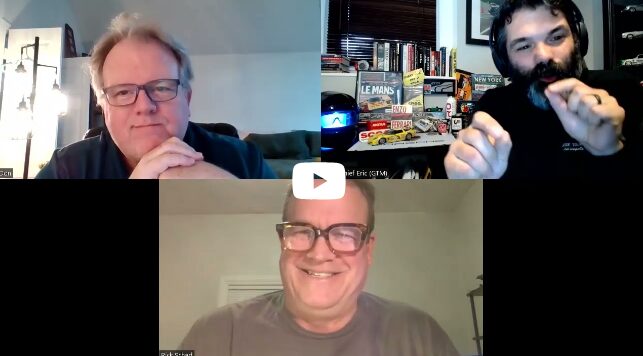
All of our BEHIND THE SCENES (BTS) Break/Fix episodes are raw and unedited, and expressly shared with the permission and consent of our guests.
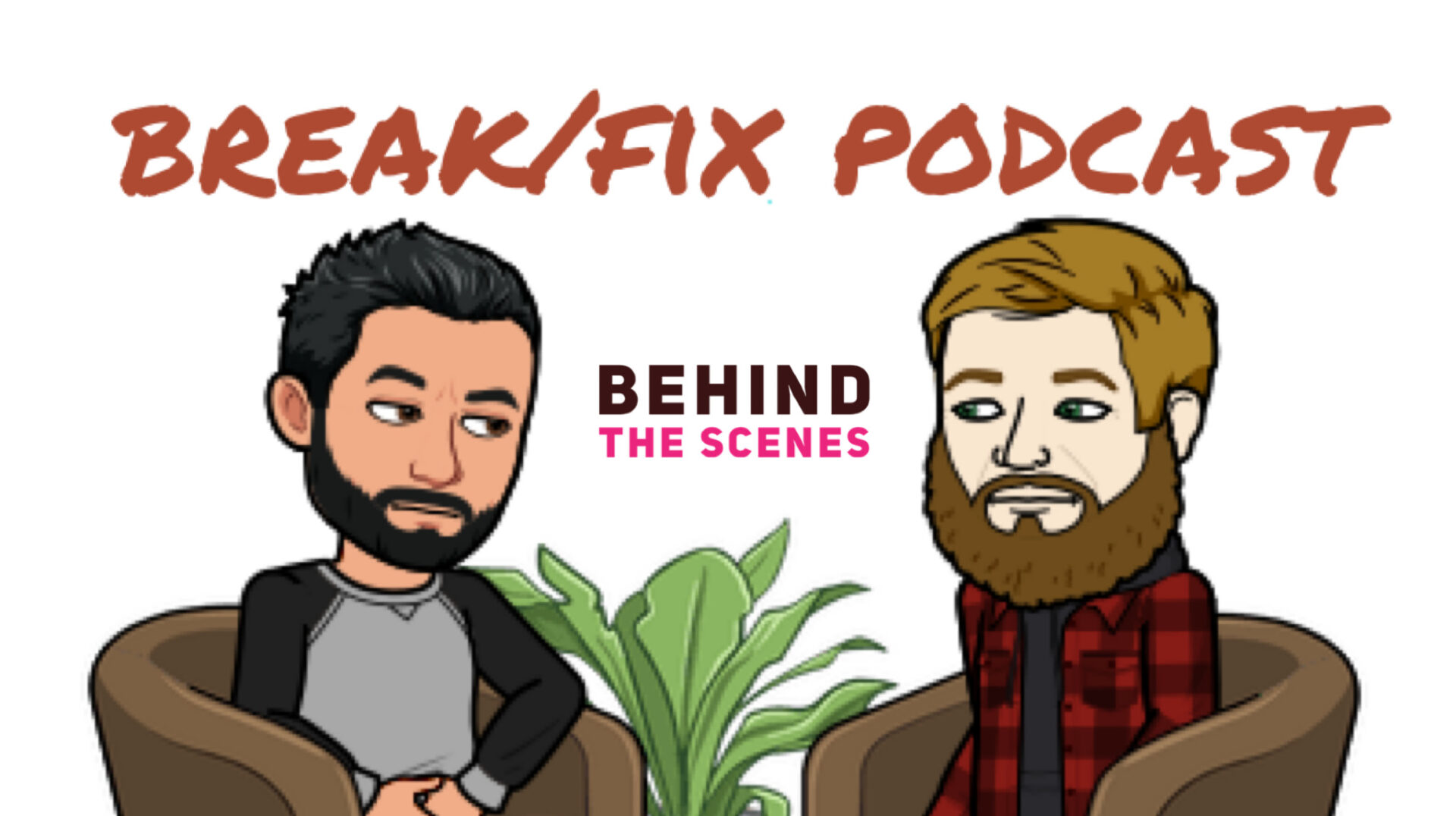
Consider becoming a GTM Patreon Supporter and get behind the scenes content and schwag!
Do you like what you've seen, heard and read? - Don't forget, GTM is fueled by volunteers and remains a no-annual-fee organization, but we still need help to pay to keep the lights on... For as little as $2.50/month you can help us keep the momentum going so we can continue to record, write, edit and broadcast your favorite content. Support GTM today! or make a One Time Donation.

If you enjoyed this episode, please go to Apple Podcasts and leave us a review. That would help us beat the algorithms and help spread the enthusiasm to others by way of Break/Fix and GTM. Subscribe to Break/Fix using your favorite Podcast App:
 |  |  |
Learn More
What’s your most complex build, Rick?
“The most challenging build I had to do was I was hired by the United States Marine Corps to build an entire squadron of Harrier jump jets for the 50th anniversary of the Black Sheep squadron, and these were 132nd scale aircraft. In their configuration. So I had to do everything custom to make it look exactly like those, but I don’t build models that just look like the thing I’m building the engines to where they’re all wired.”
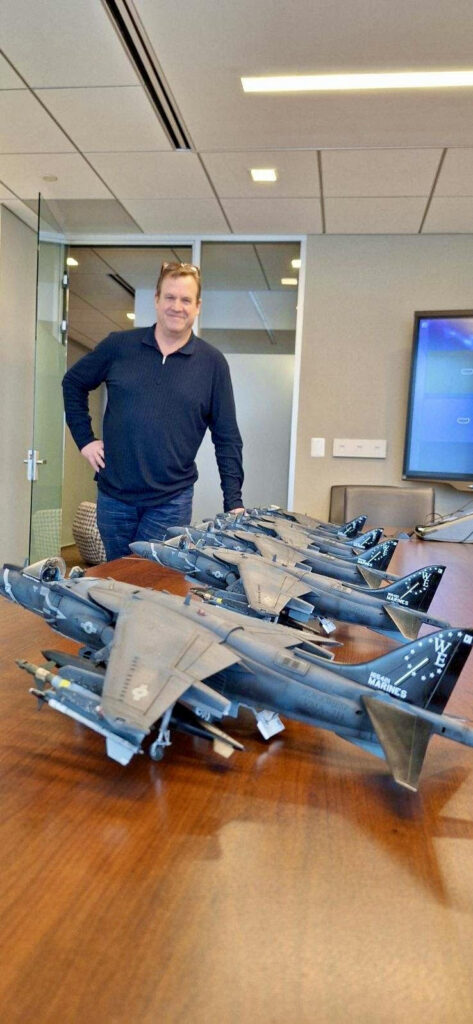
“The cockpits are all perfect. The wheel wells are all plumbed with hydraulics. So to do a whole squadron, which was six aircraft. At one time was absolutely insane. It took 14 weeks to do them working every single day, at least eight hours a day, sometimes 10 hours, sometimes 12 hours a day. It was insane.”
To learn more about Rick be sure to follow him on social media @thepopeofplastic on Instagram and YouTube and most importantly @thepopeofplastic on Tik Tok where you can see him build live daily; and if you’d like to commission some work you can reach him via email at rickschad@gmail.com
Rick’s artistic roots trace back to childhood. His first model – a Revell submarine in 1975 – was a disaster, but his older brother David was the true inspiration. Forbidden from watching David build, Rick would sneak into his room to study the models and paints. That curiosity became a lifelong passion.
Later, model building became more than a hobby – it became a lifeline. During a battle with alcoholism and depression, Rick returned to the craft. It gave him purpose, structure, and eventually, a community.

The moniker “Pope of Plastic” started as a joke. Rick needed a name for his social media presence and imagined plastic as a religion. Who’d be at the top? The Pope. It stuck – and it became a brand.
On TikTok, Rick found his people. His live builds – three times a day – became must-watch content. Fans tune in like it’s a TV series, watching him unbox, paint, wire, and weather models with precision and personality. They love the realism, the occasional F-bombs, and the shared frustration when a tiny part hits the floor.
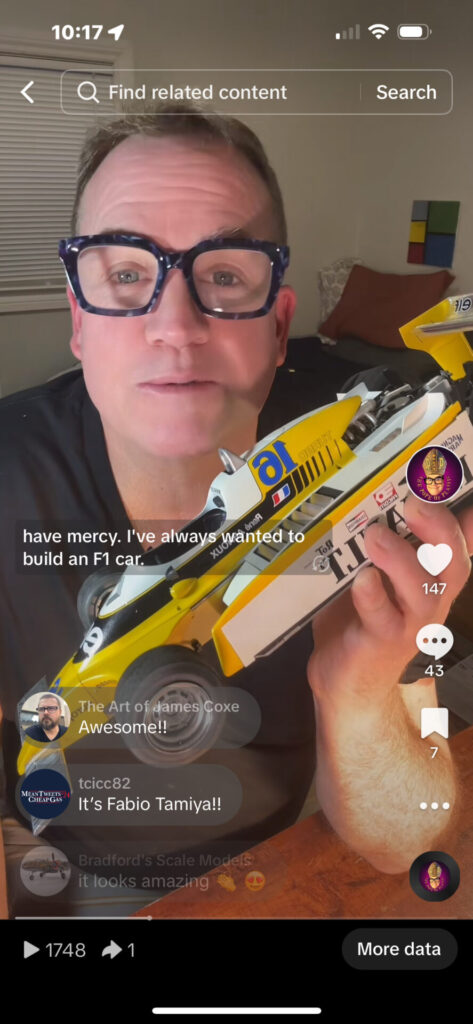
Building Community, One Model at a Time
Rick’s TikTok isn’t just entertainment – it’s therapy, mentorship, and inspiration. Recovering addicts, parents, and curious creatives find joy in his process. Customers commission builds and watch them come to life. Some fans even send him kits he’s always dreamed of building.
His “F-Bomb Marathon” – a 12-hour live build followed by a live auction – drew over 140,000 viewers. He’s built everything from tanks to planes to a 1934 Alfa Romeo Spider, and even a squadron of Harrier jets for the U.S. Marine Corps.
Rick’s bucket list includes a 1:12 scale Bugatti Type 37 and a four-foot Titanic with working lights and steam funnels. With over 100 kits waiting in his studio and a growing fanbase, the Pope of Plastic isn’t slowing down.
Rick Schad’s story is a testament to creativity, resilience, and reinvention. Whether he’s branding a Formula One car, building a concours event, or wiring a model engine live on TikTok, he brings artistry and authenticity to everything he touches.
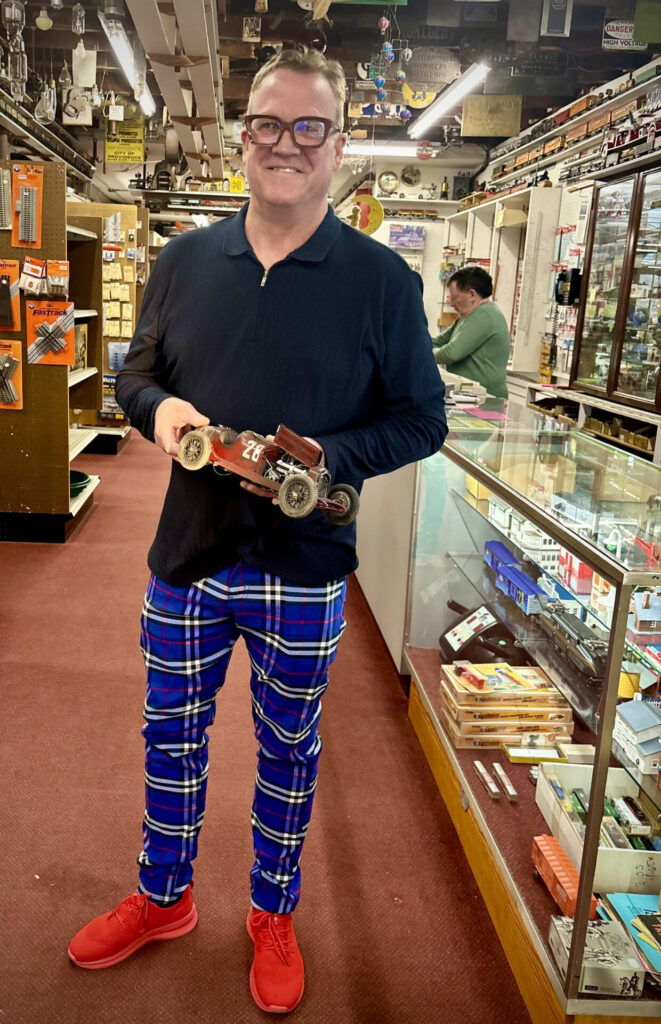
And if you ask him what the sexiest car of all time is? Ferrari. Every curve, every sound, every silhouette – pure art.
Guest Co-Host: Don Weberg
In case you missed it... be sure to check out the Break/Fix episode with our co-host. |  |  |


